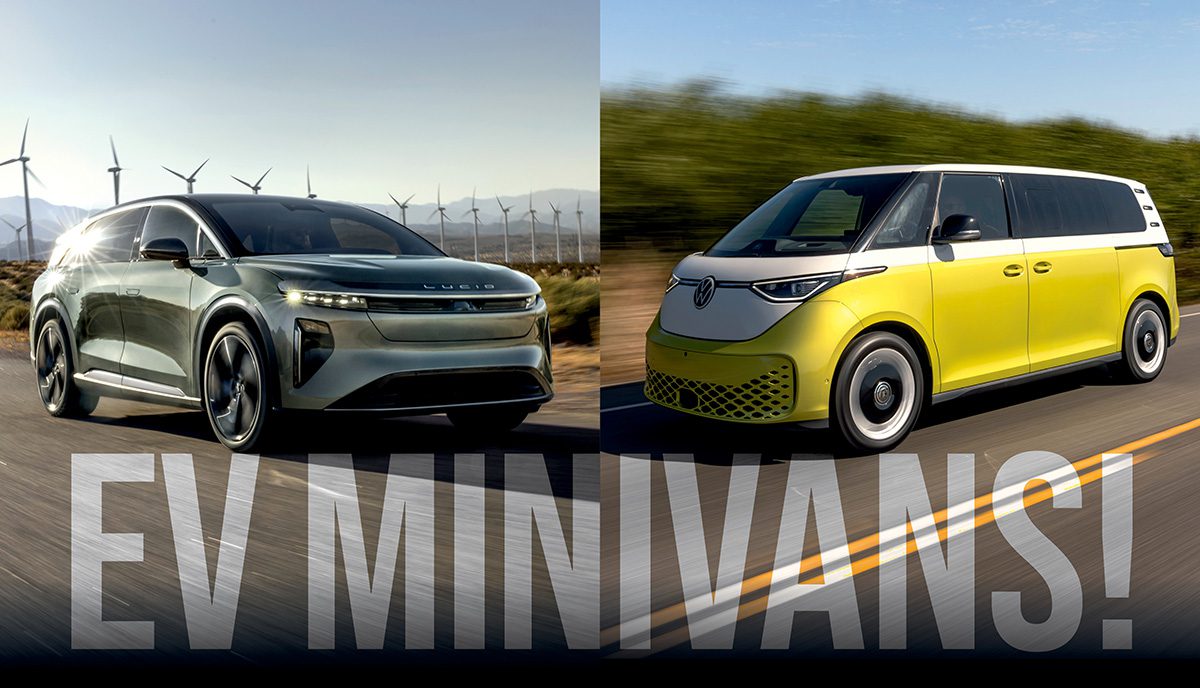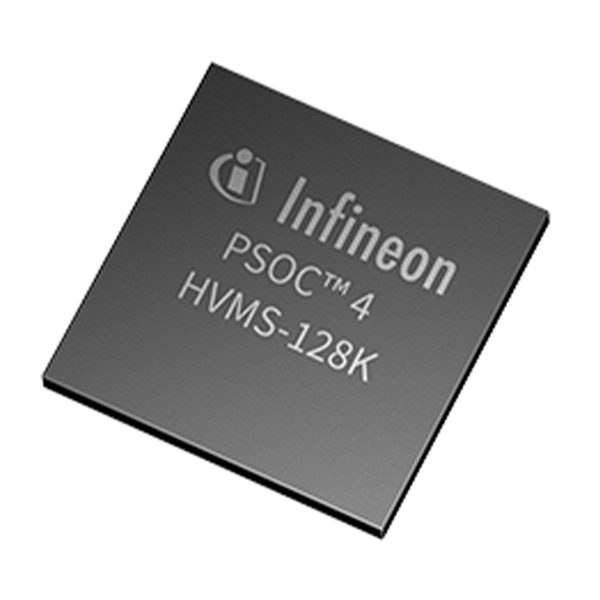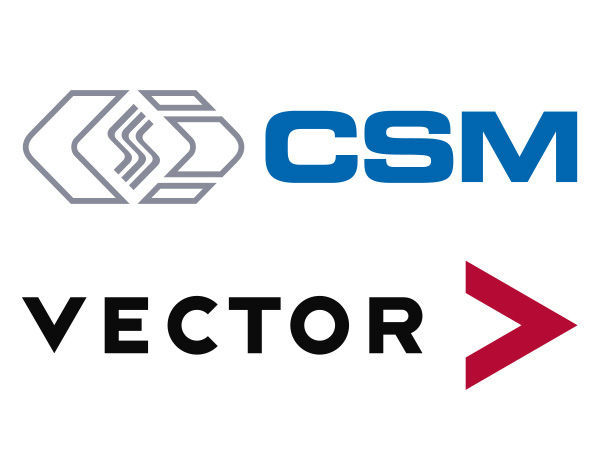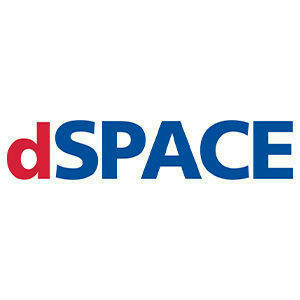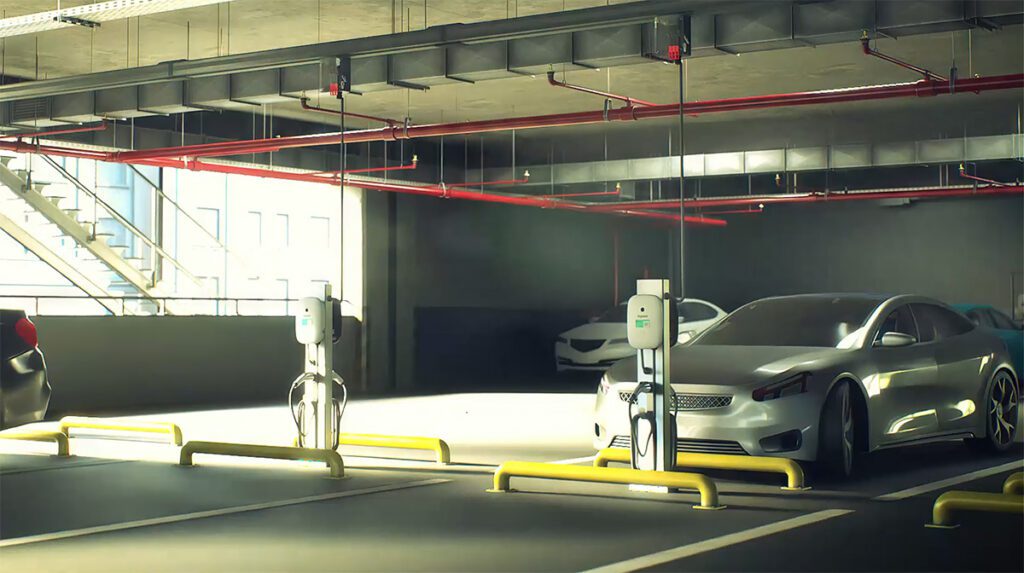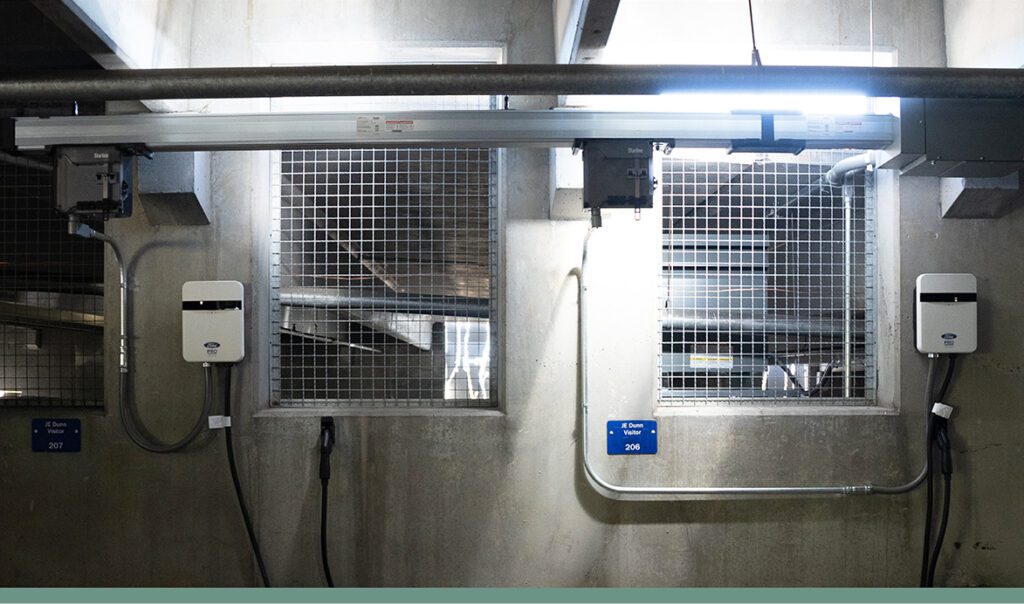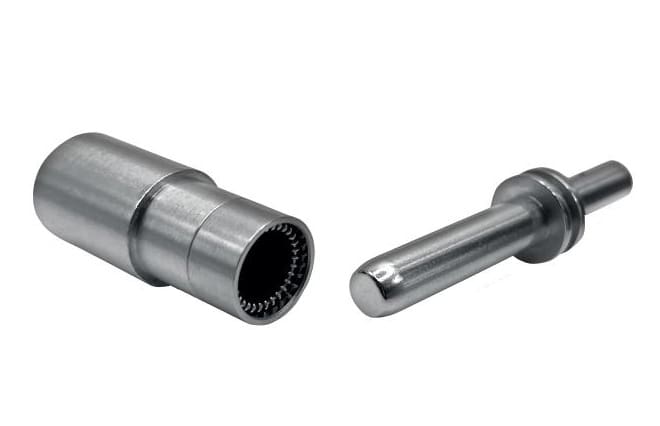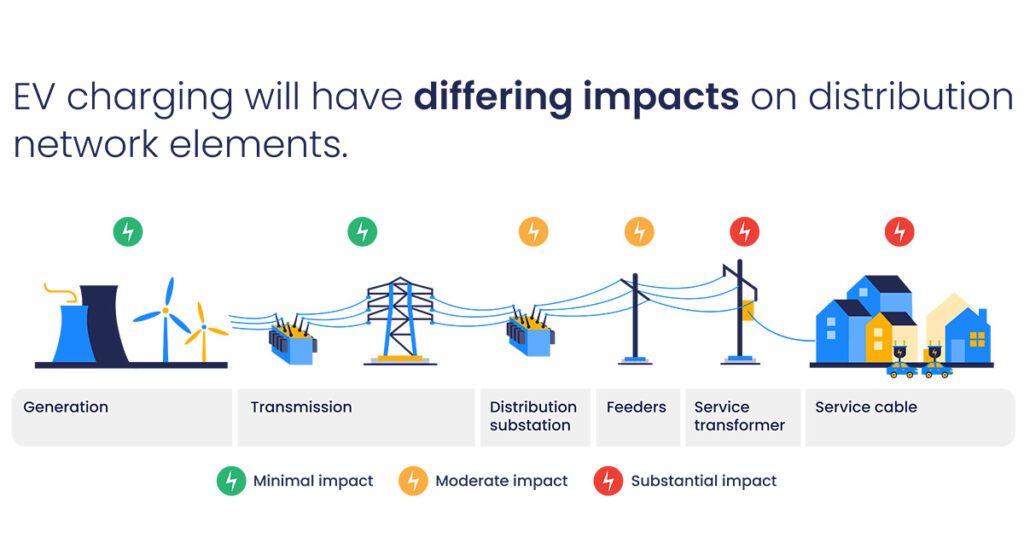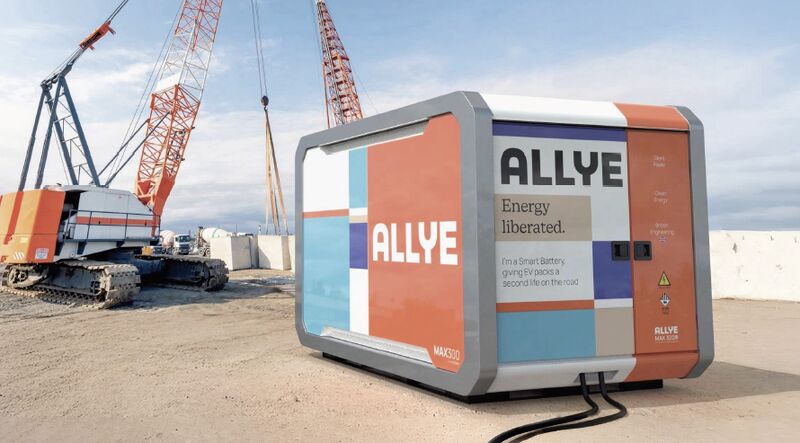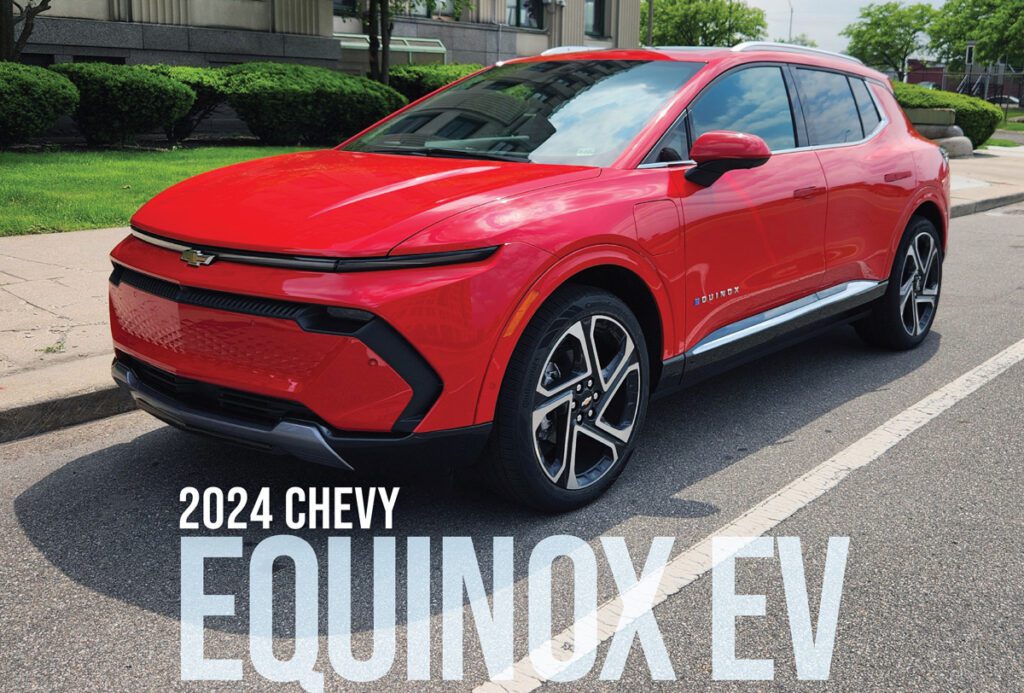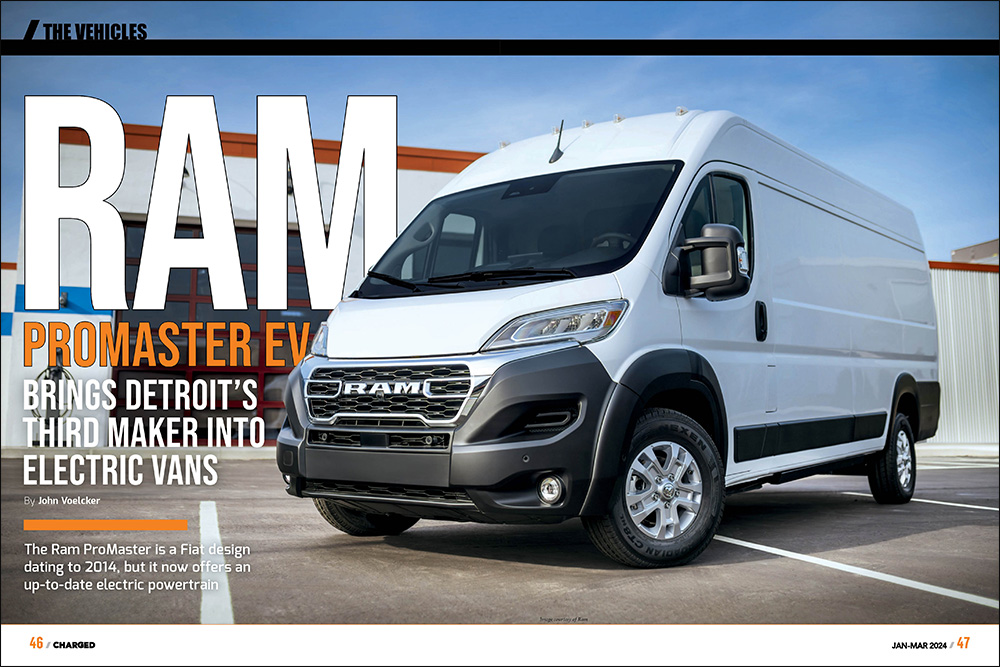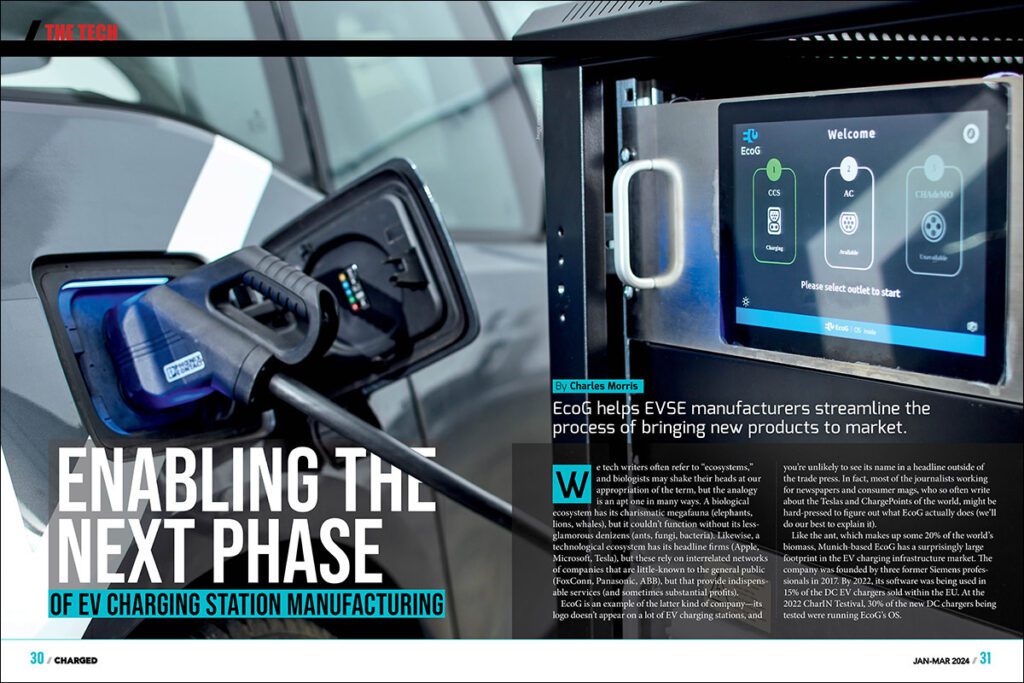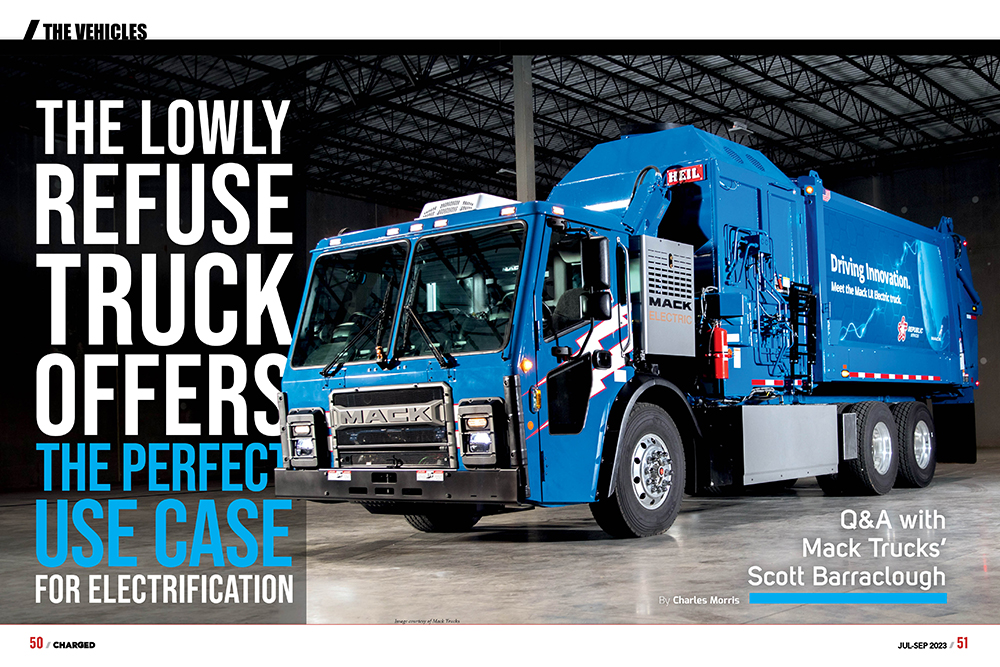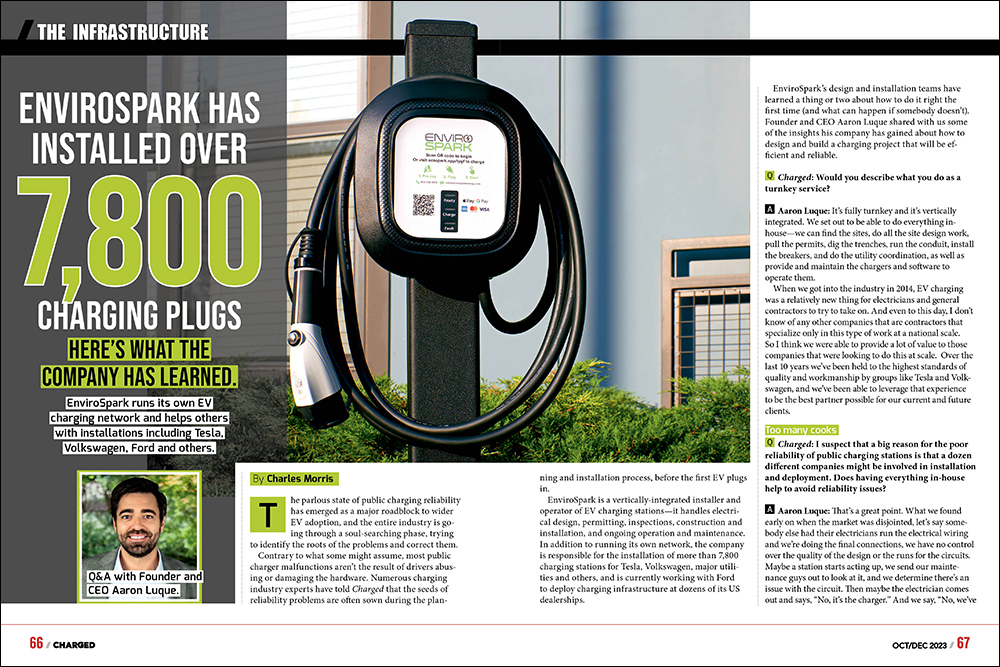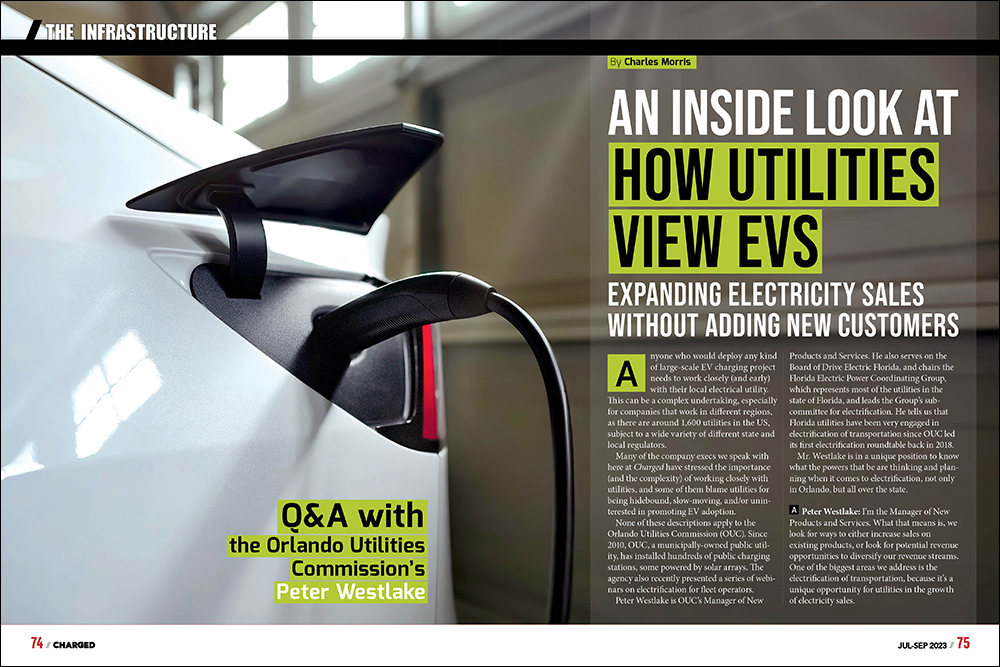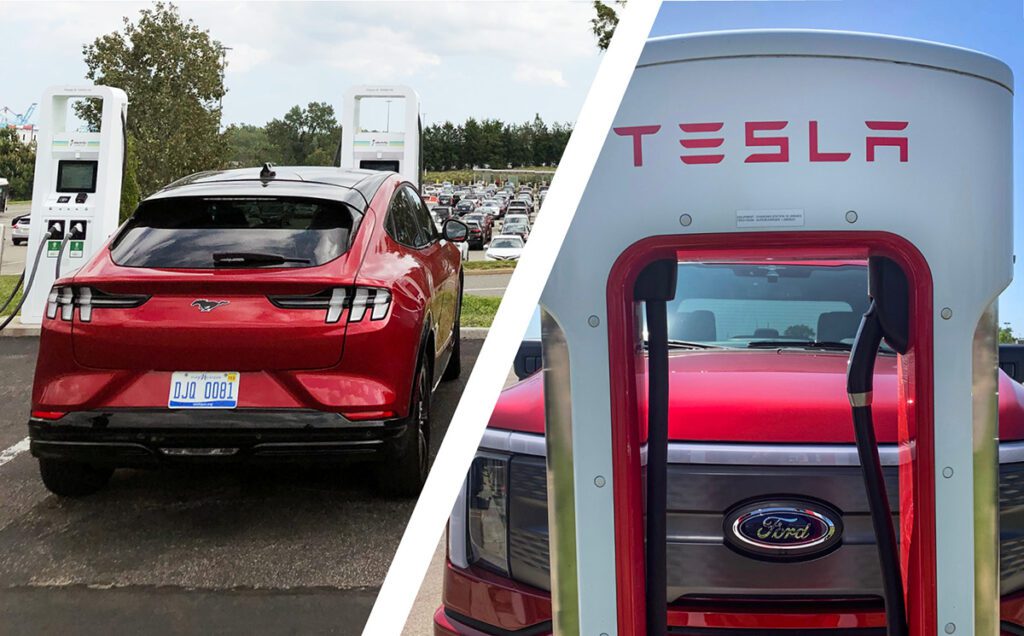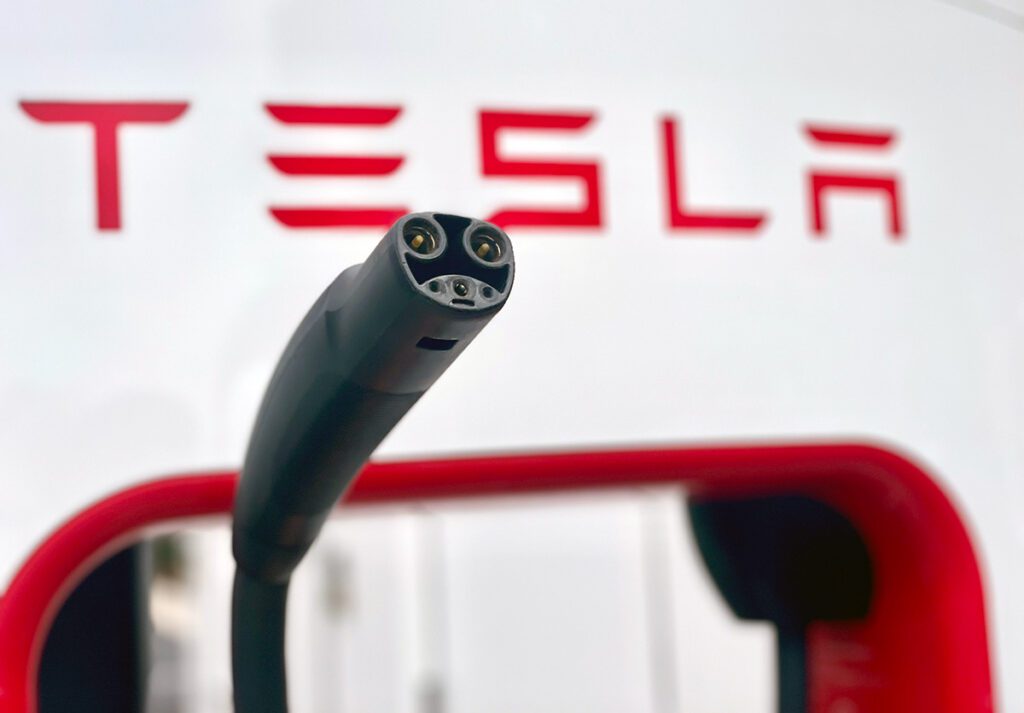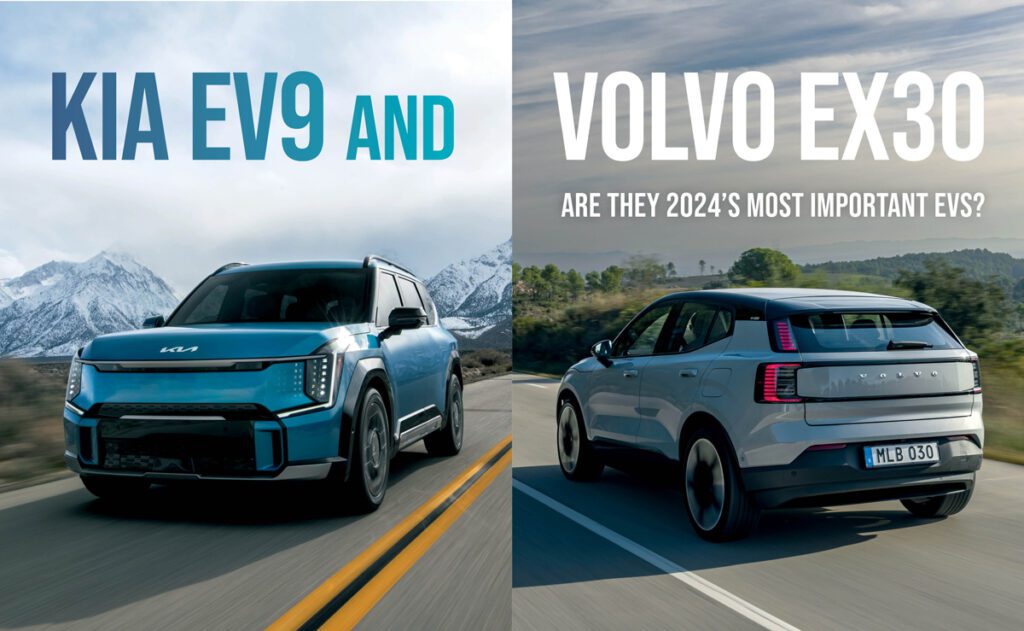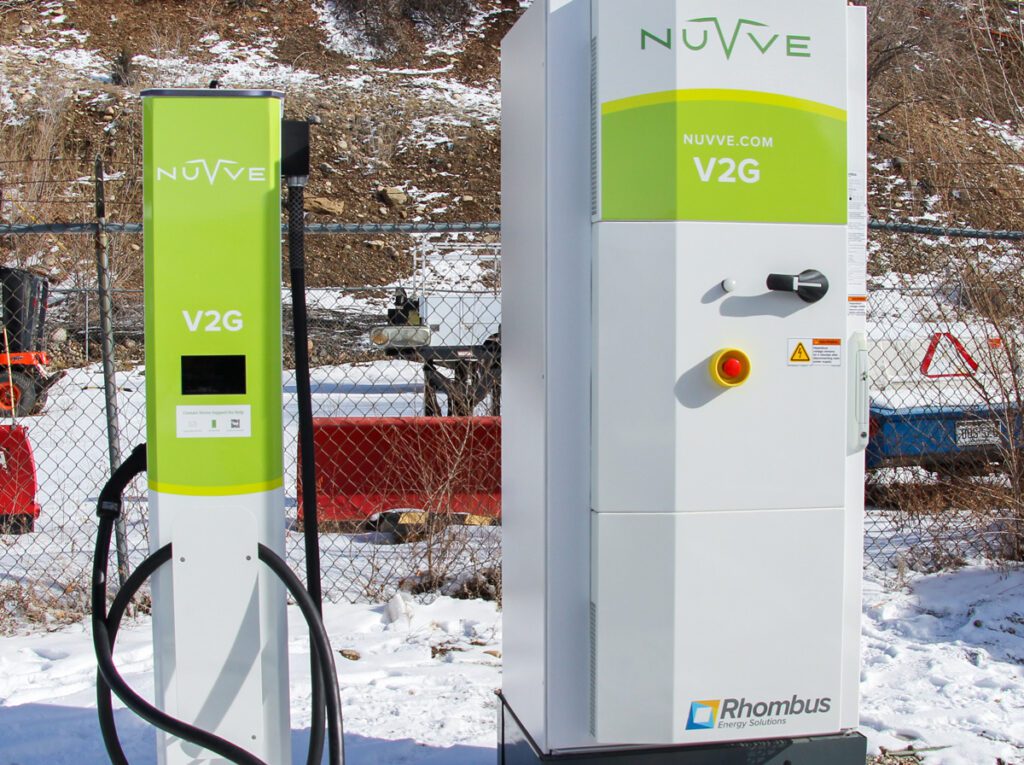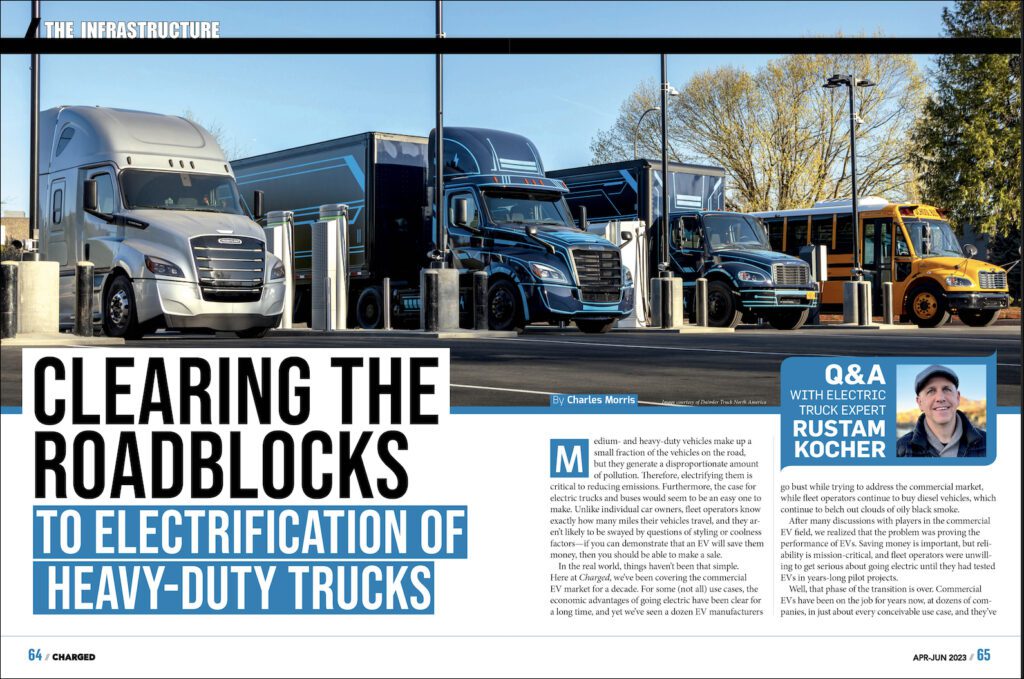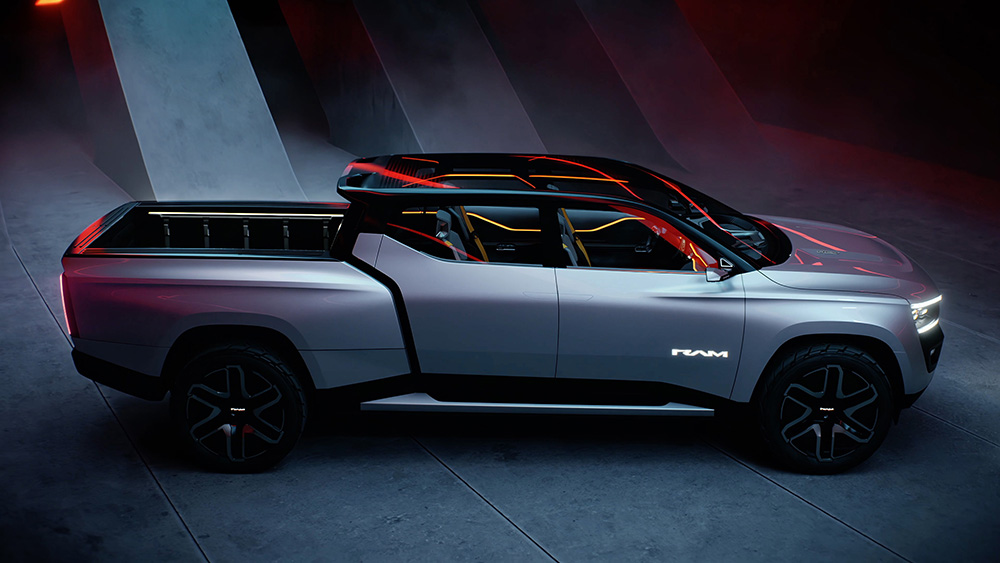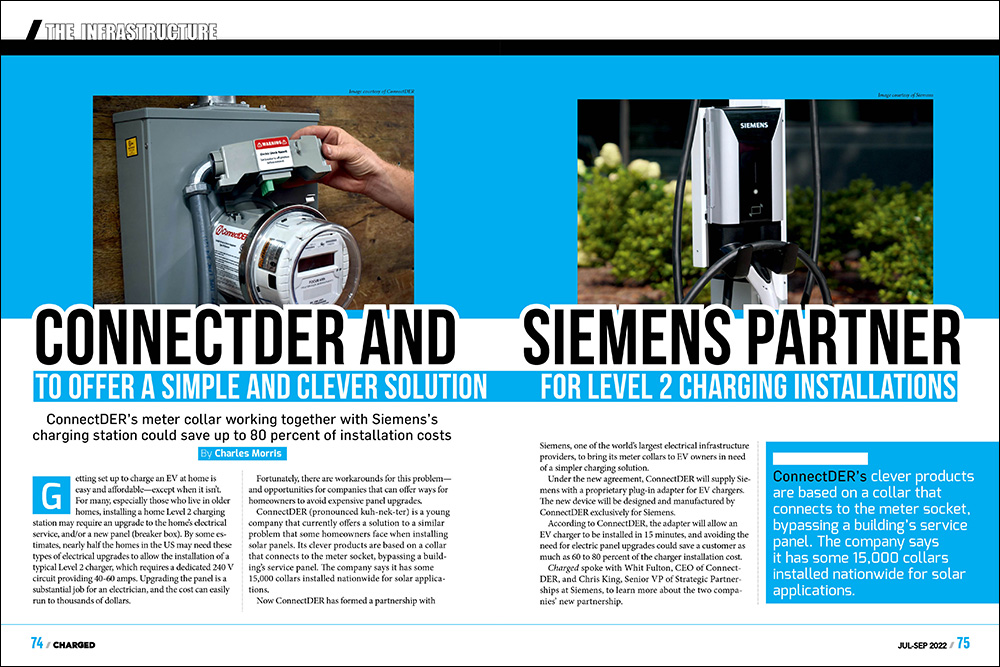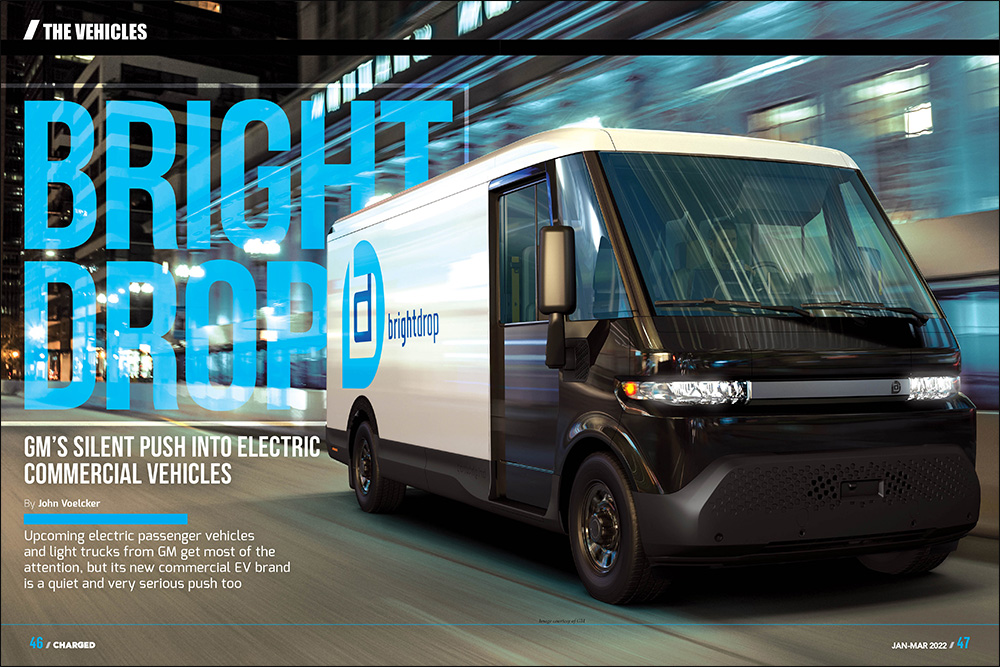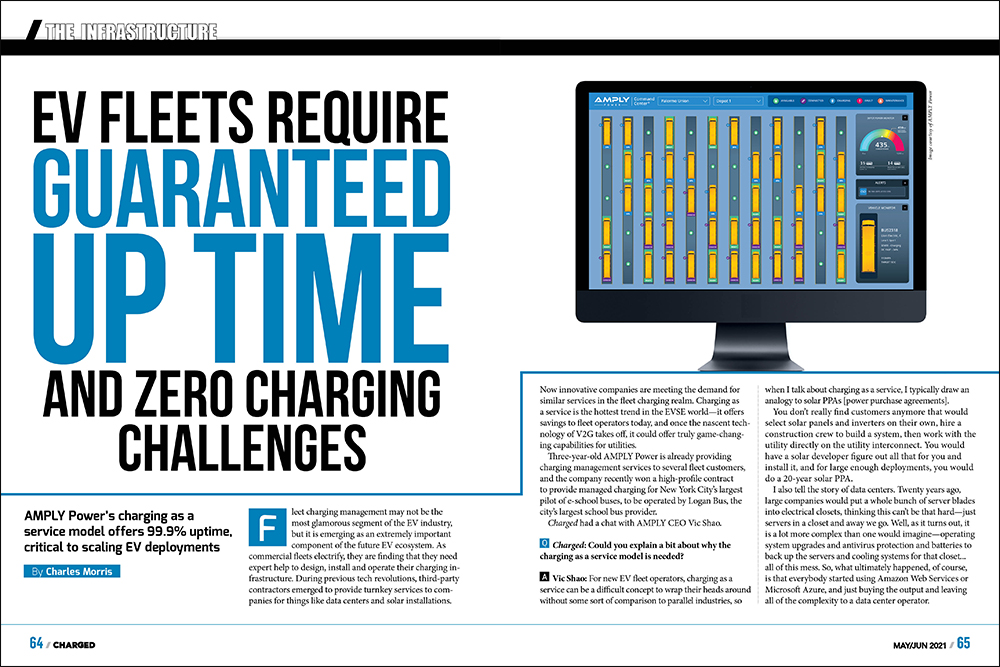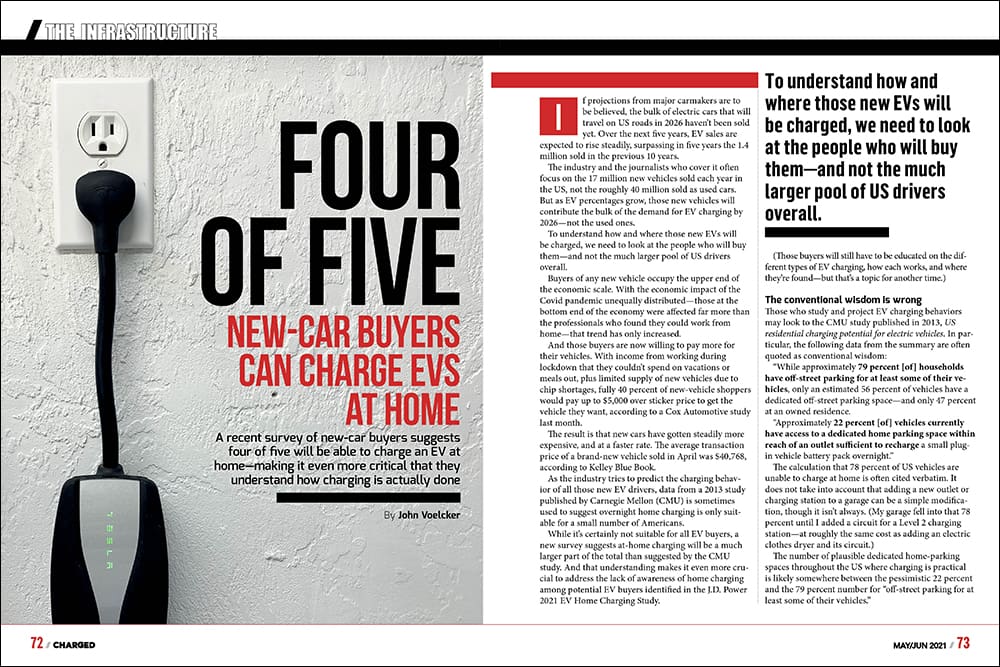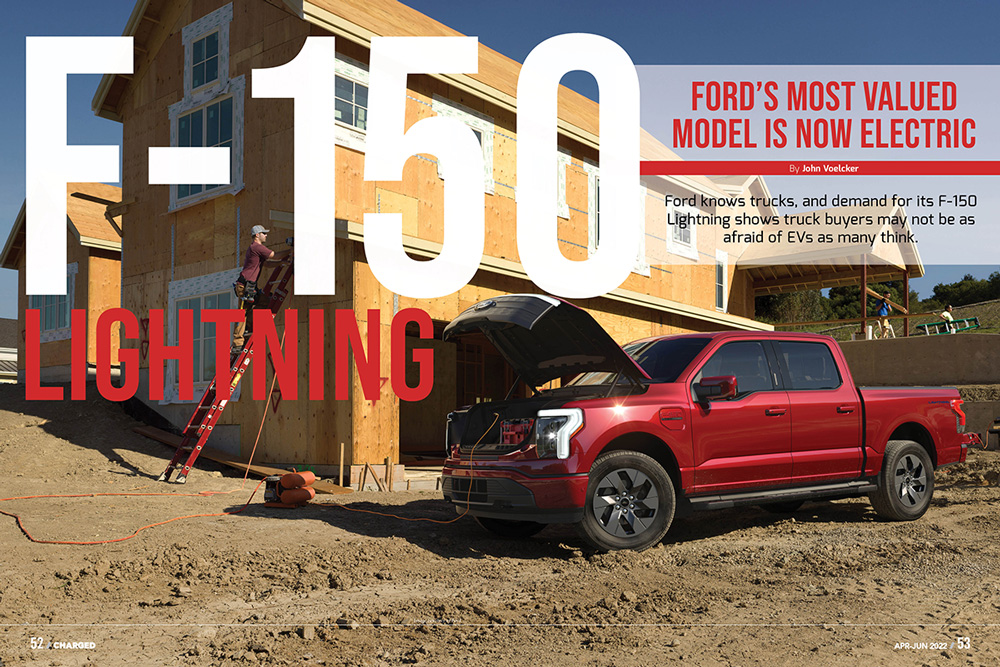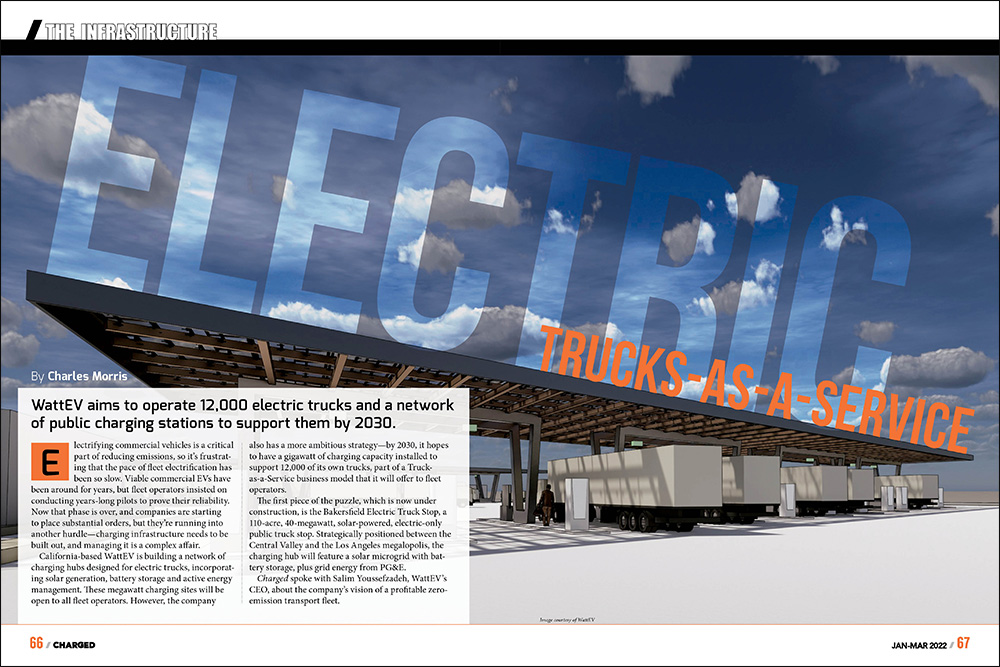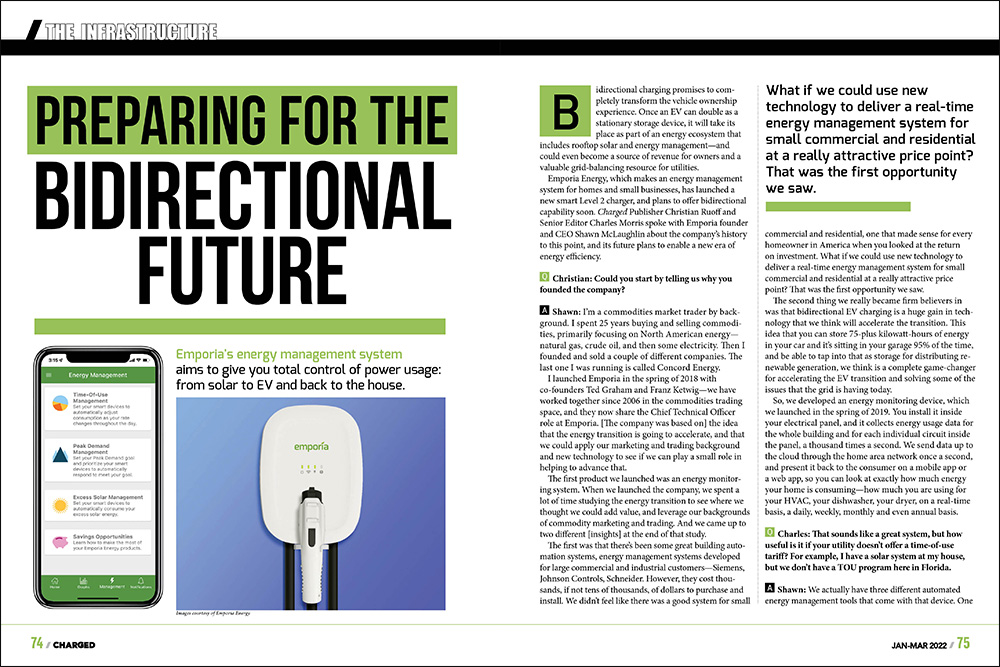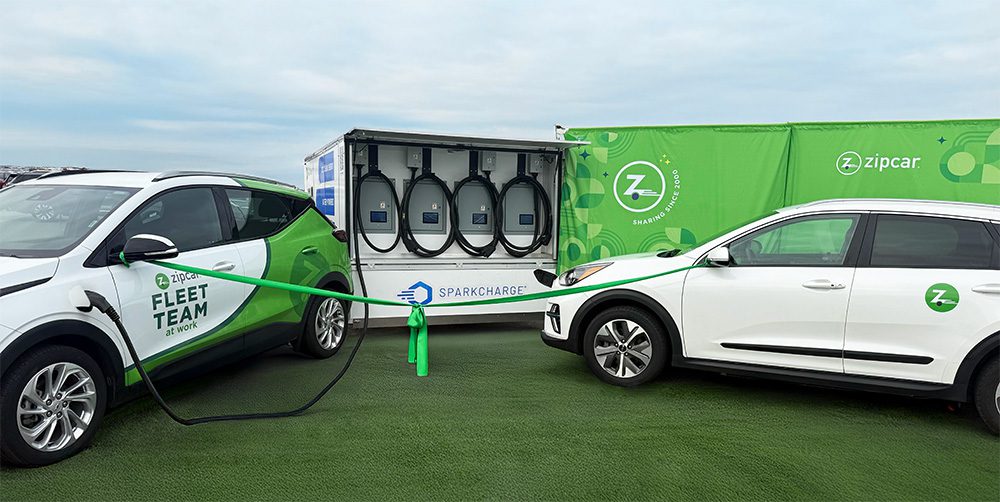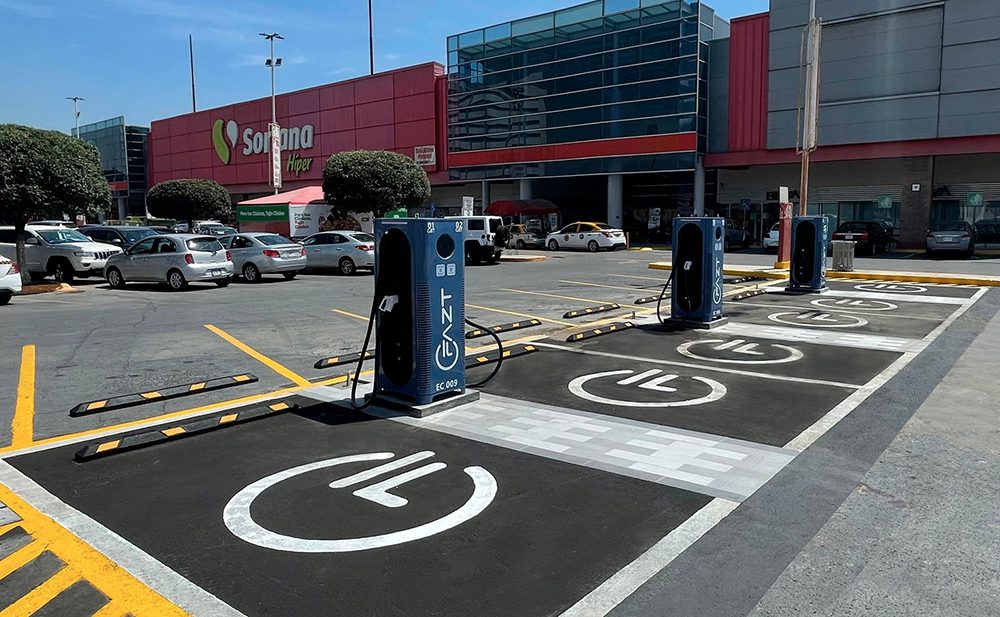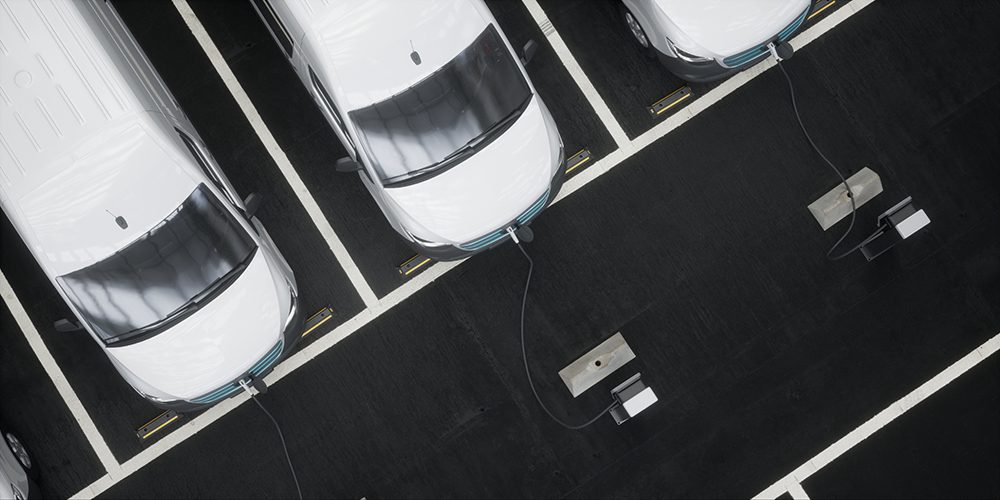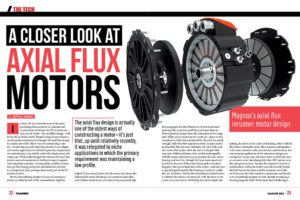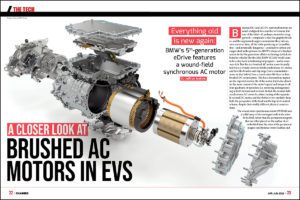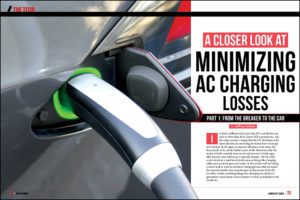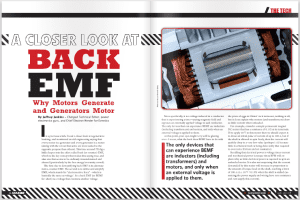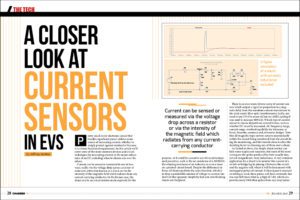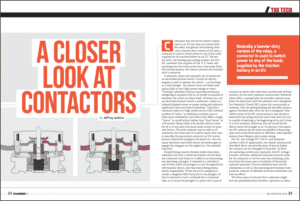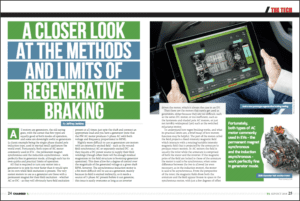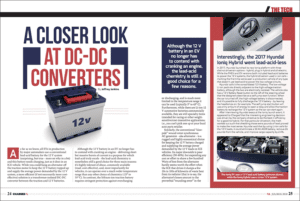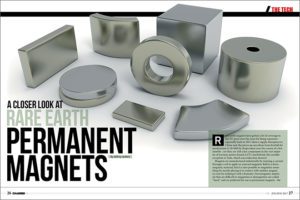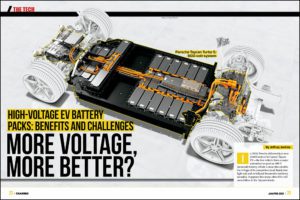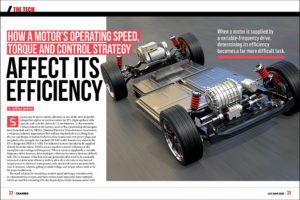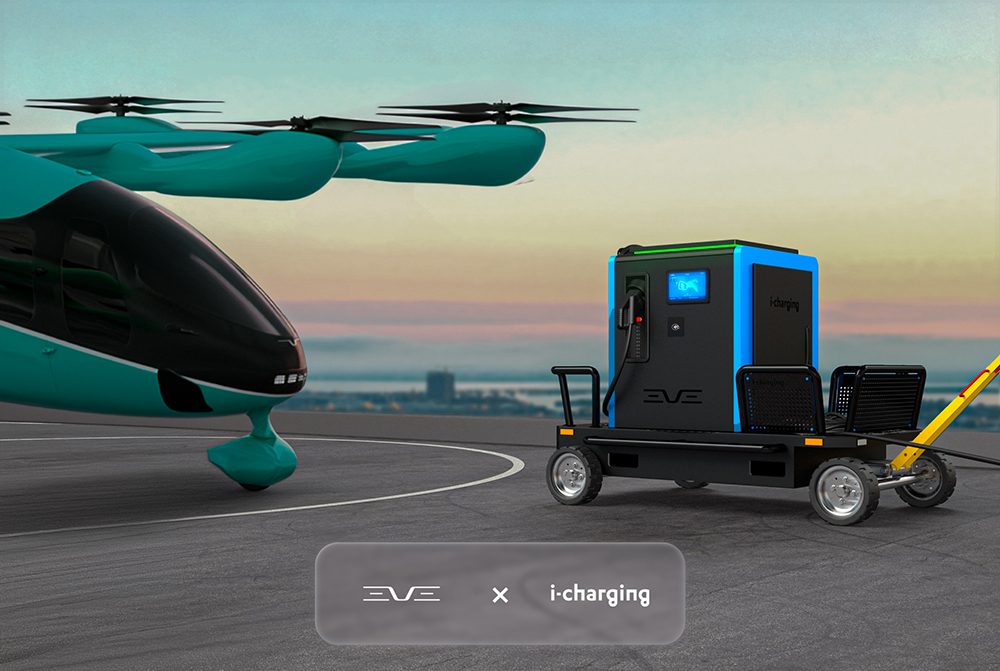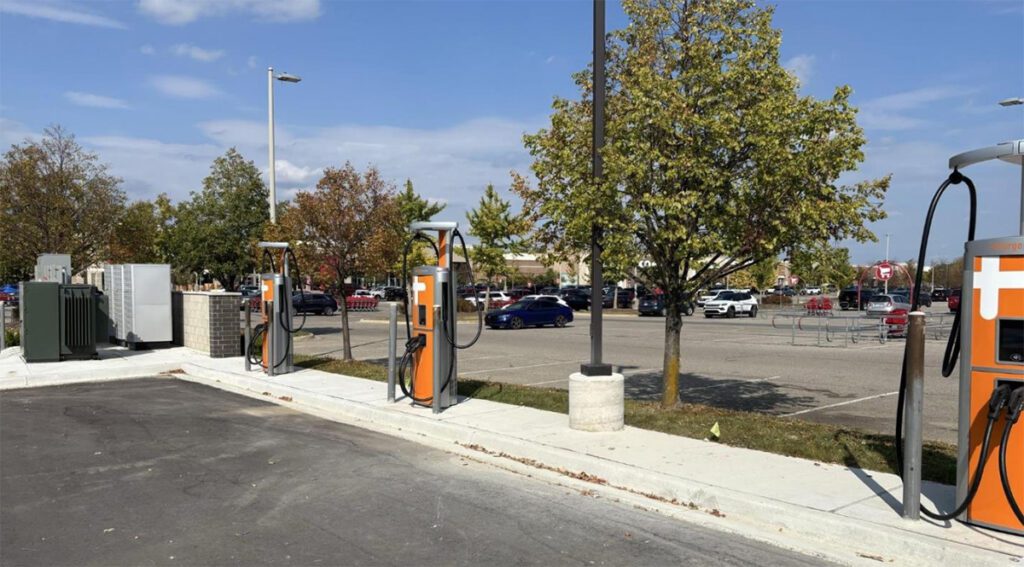One’s a retro icon, electrified, the other’s a fast, sleek luxury seven-seater—but they both qualify as minivans if you squint.
Remember minivans? The hugely practical family vehicles with three rows of seats, superb cabin access, sliding side doors, and features like hidden floor compartments and vanishing third rows? They hit their height of popularity in North America around 2000, then lost favor as supposedly safer SUVs with more rugged proportions gained favor.
Now, two new electric minivans—the retro Volkswagen ID.Buzz and the luxury Lucid Gravity—have joined the four gasoline entries that make up a shrunken, if steady, segment. Those are the Chrysler Pacifica, Honda Odyssey, Kia Carnival and Toyota Siena. For 2025, the Toyota is offered only as a hybrid, while the Kia and Chrysler have optional hybrid versions, though the Pacifica “Hybrid” is actually a plug-in hybrid with 30-plus miles of electric range.
The VW ID.Buzz has been a long time coming; it was first shown as a concept in January 2017, and production was confirmed that August after a rapturous reception. It arrived at US dealers early in 2025, though a version with a shorter wheelbase went on sale in Europe 18 months prior, as did commercial versions without the passenger seats or side windows.
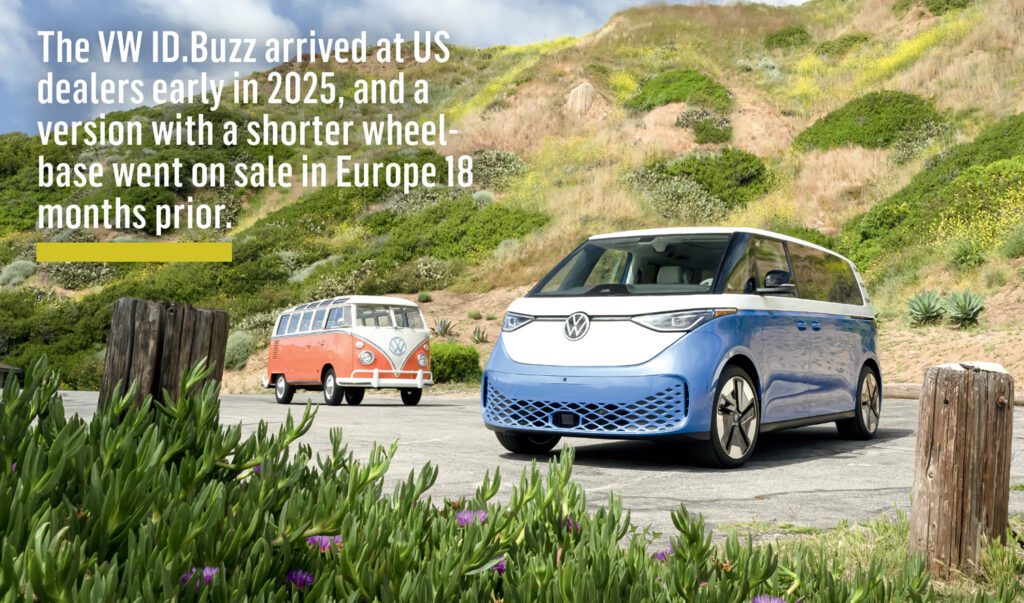
Making everyone smile
The main selling point of the ID.Buzz may be that it makes people grin when they see it. VW has smartly offered two-tone versions of most colors, with the body below the beltline painted in a variety of shades including a vibrant blue, a chrome yellow, and a few others, paired to a white or grey upper body—just like the legendary Microbus of the Sixties.
The Buzz is tall, vertical and slab-sided. Combining its short front nose with a fixed glass panel between the leading edge of the front-door window and the windshield pillar cleverly disguises a considerable distance between the driver and front passenger and the base of the windshield. This is designed to provide the kind of safety crush zone notably absent from the original Type 2, which continued for several decades after its 1950 launch with the driver’s feet just 18 inches or so from a potential crash.
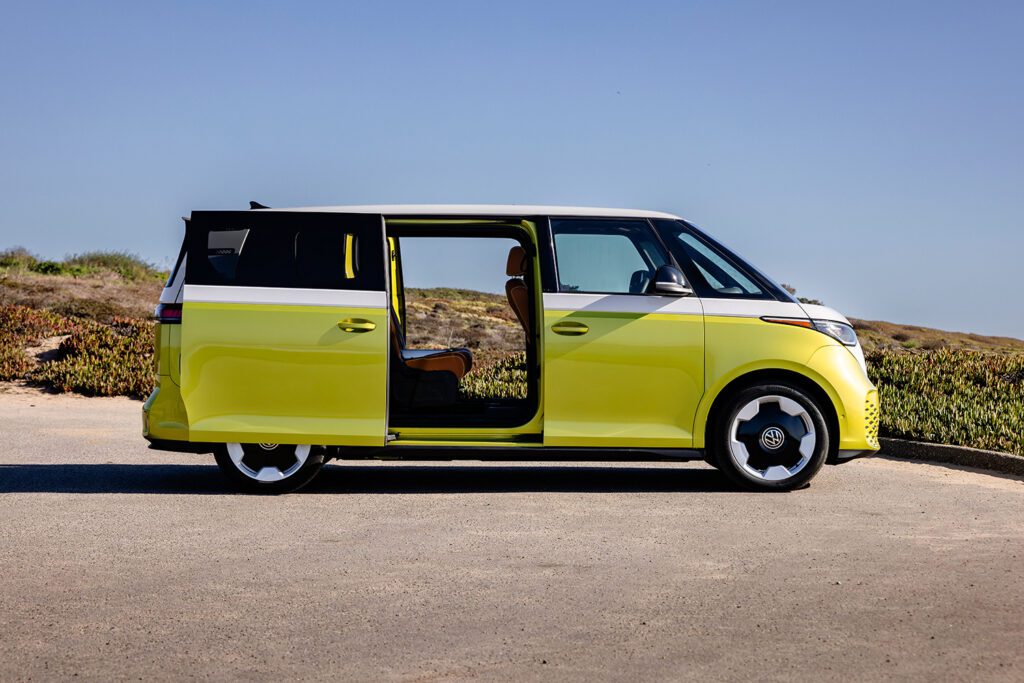
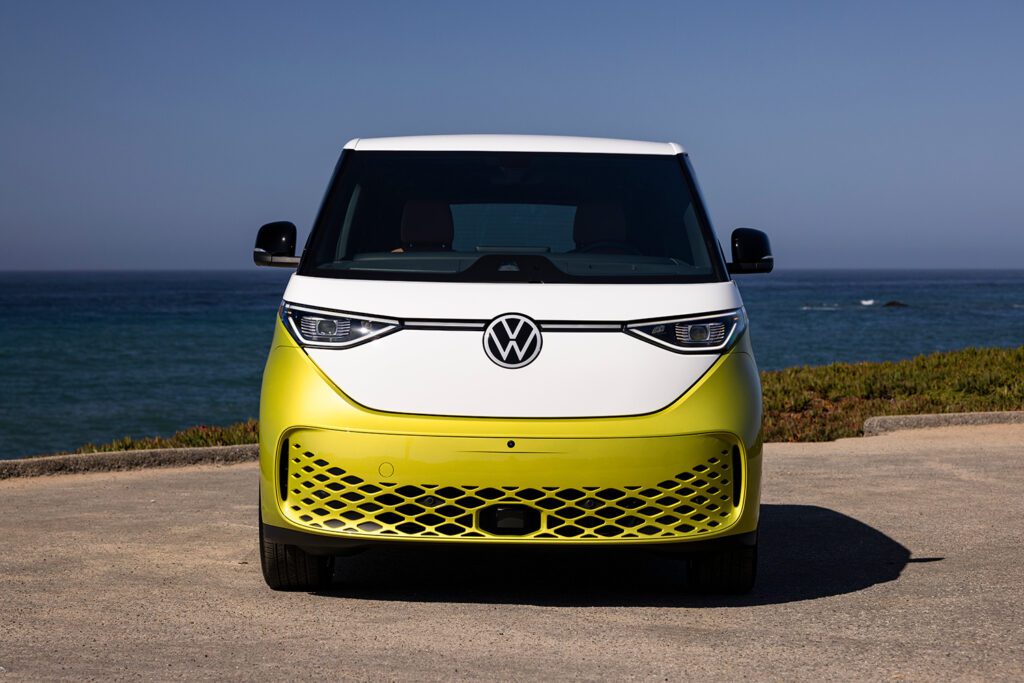

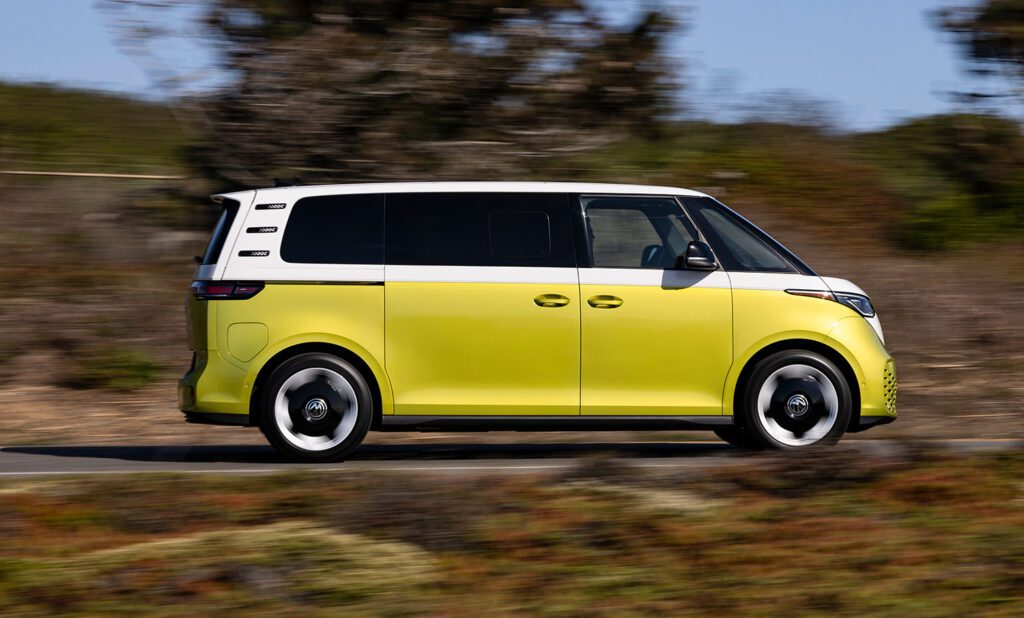
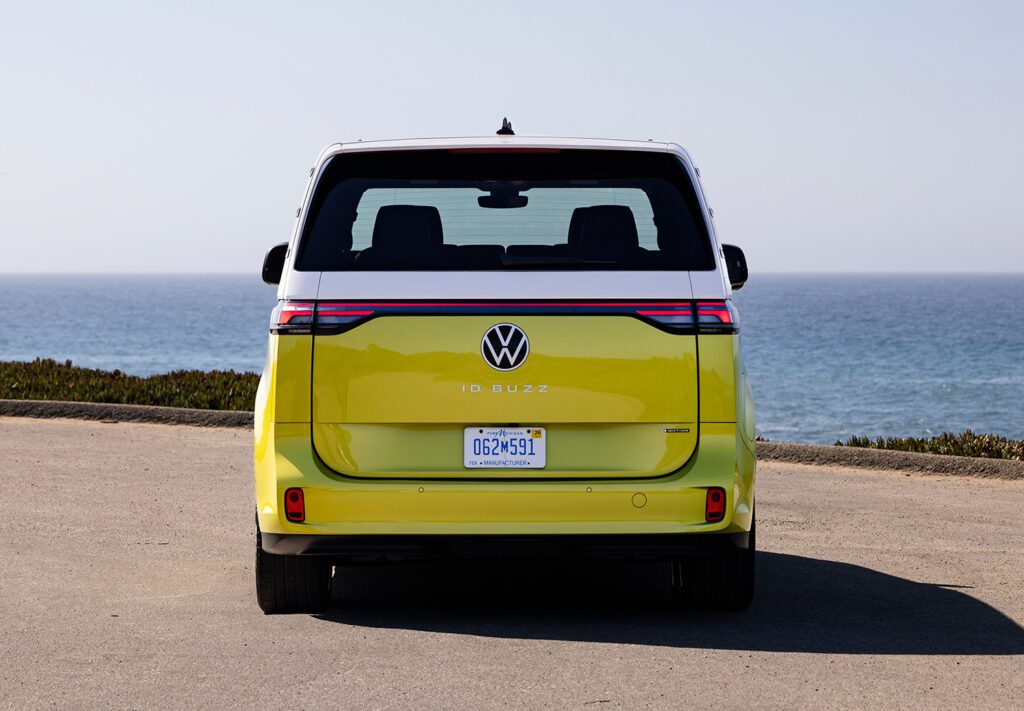
Images courtesy of Volkswagen of America.
The Buzz has two drawbacks. It’s pricey for a VW, with a starting price of $61,500 for the base Pro S trim, and high-end versions approaching $75,000. That’s partly due to its limited numbers. Global production capacity at VW’s factory in Hannover, Germany, for the passenger and commercial versions of the Buzz combined, is slightly over 100,000, which isn’t a lot to serve dozens of global markets at once.
Worse, its range isn’t great. Rated at 234 miles in rear-wheel-drive form, or 231 miles if you add the optional front motor for all-wheel drive, it loses out on range against three-row EV crossovers, from the Hyundai Ioniq 9 (320 to 335 miles) and Kia EV9 (230 to 304 miles) to the gigantic Cadillac Escalade IQ, with its estimated 460 miles.
The standard model of the ID.Buzz sold in the US has a 210-kilowatt (282-horsepower) motor that drives the rear wheels, rated at 413 lb-ft of torque. Optional 4Motion all-wheel drive adds a second, 40 kW (53 hp) motor to power the fronts, rated at 99 lb-ft. Regrettably, it uses VW’s confusing, inconsistent user interface, which is now quicker to respond but remains perplexing.


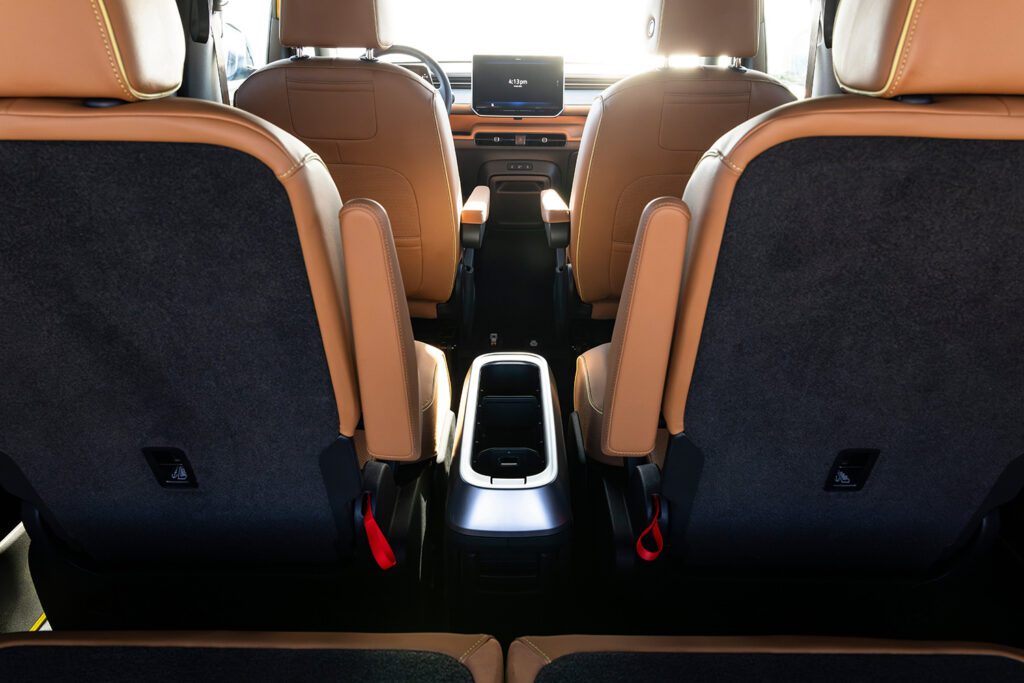
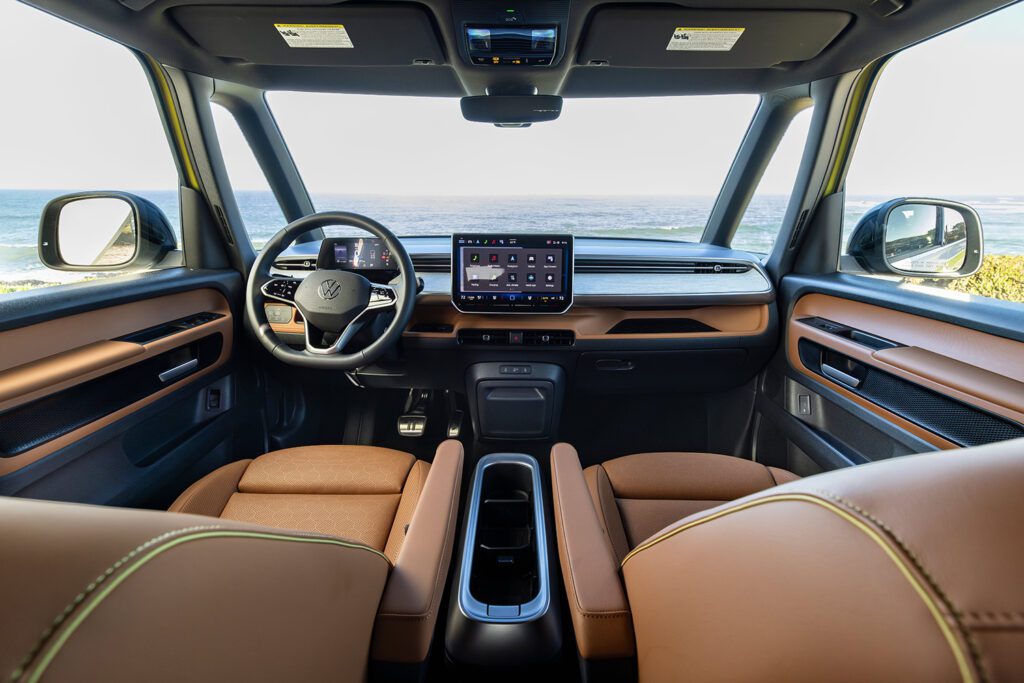

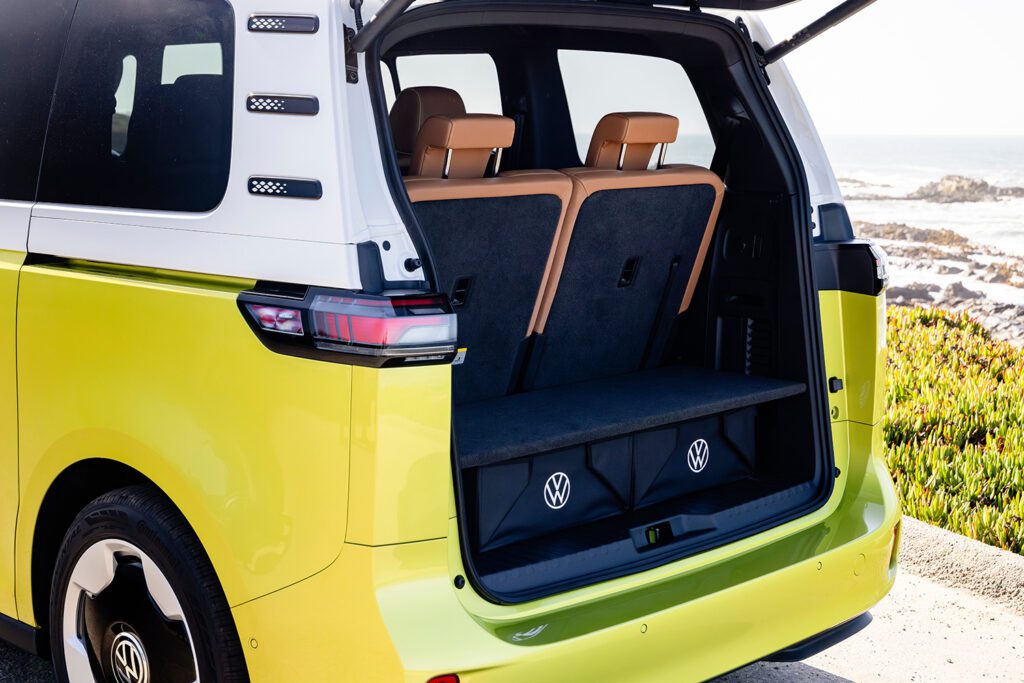
Clever engineering, fast and sleek
The Lucid Gravity is the long-awaited follow-up to the Lucid Air, the low, sleek, very-long-range electric luxury sedan from startup Lucid Motors. The Air is a lovely car, and the performance of its high-performance Sapphire variant is just bonkers. It’s a quiet, comfortable, capacious four-seat luxury sedan that will accelerate from 0 to 60 mph in 2.0 seconds, perhaps less.
Lucid and the Air had a very long gestation period, and luxury sedans have waned in popularity compared to SUVs. Now the Gravity is here, an addition for which the company quadrupled the floor space of its Arizona factory. Lucid expects Gravity sales to be a multiple of Air sales, which have remained around 10,000 a year globally.
The company has supplied battery packs and powertrains to the Formula E electric racing series, and its passenger vehicles are known for their superb EV engineering. Its power units are remarkably compact for their output; its vehicles are sleek, slippery, and low-drag on the outside, surprisingly capacious on the inside. And one model of the Air gets the highest energy efficiency rating of any car sold in the US.
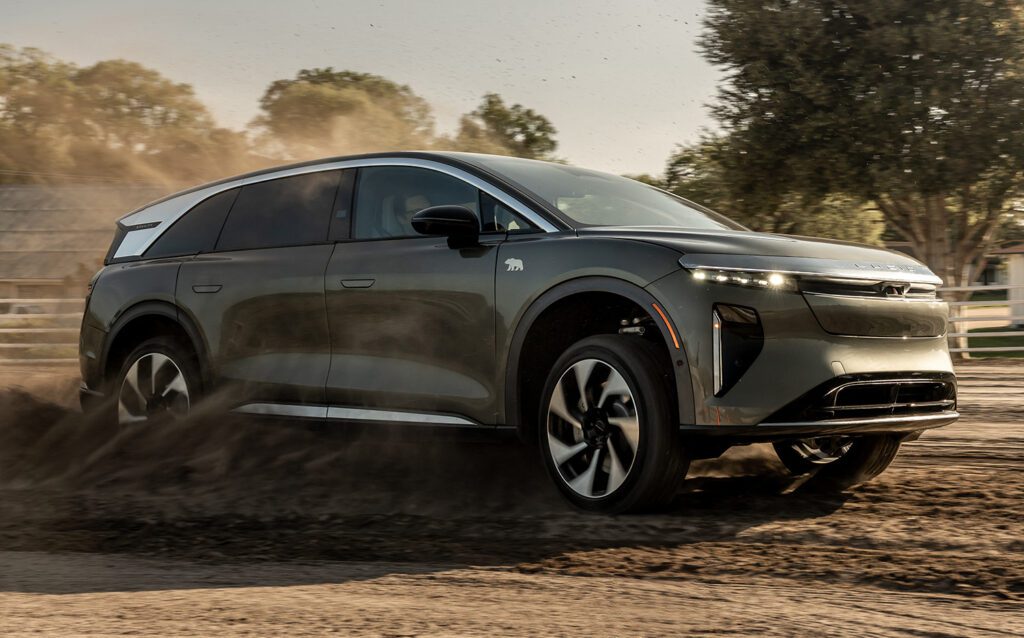
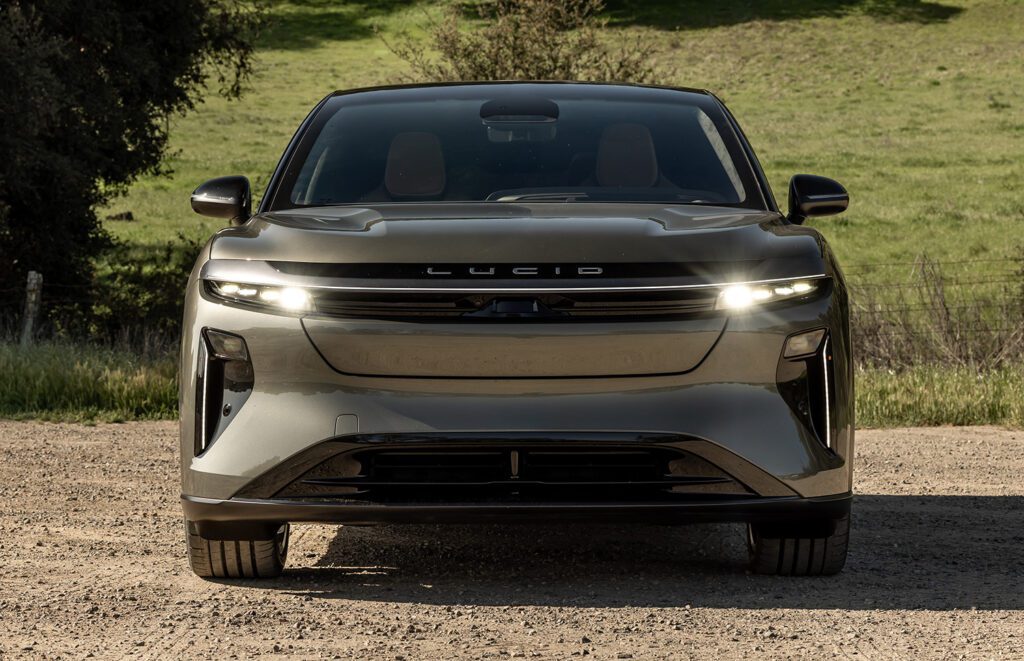

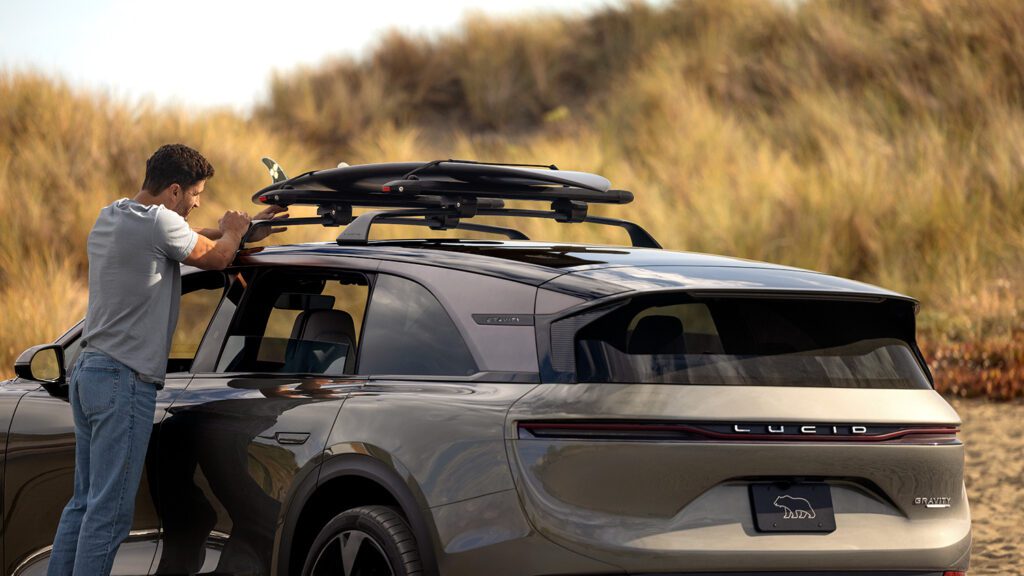
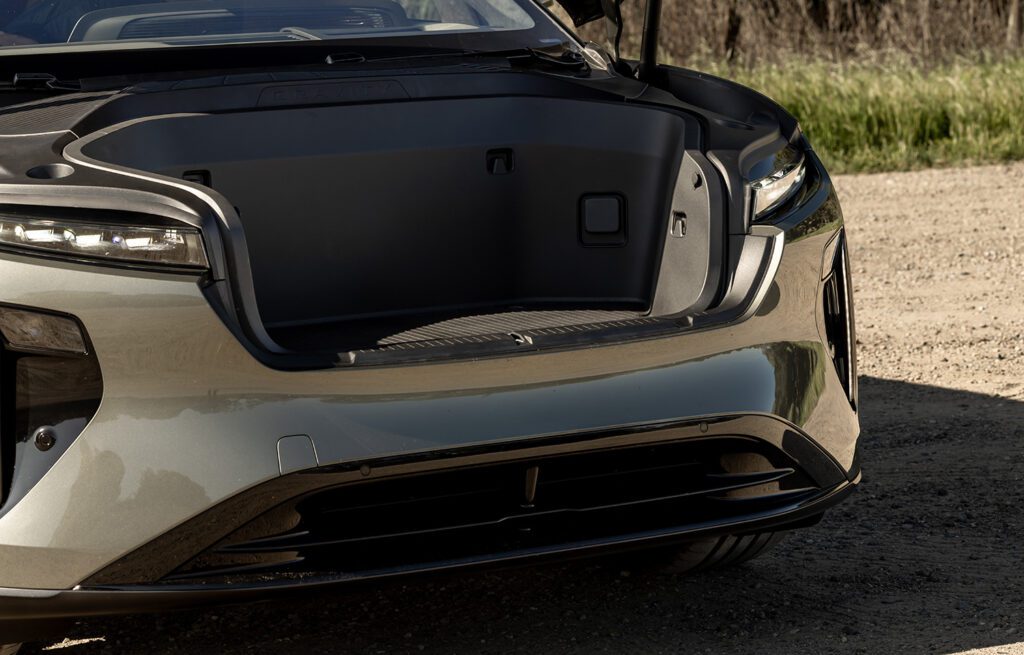

Images courtesy of Lucid.
The launch Grand Touring version of the Gravity has a total power output of 618 kW (828 hp) and torque of 909 lb-ft. Not surprisingly, that means it can accelerate from 0 to 60 mph at a quoted 3.4 seconds in Sprint mode. Happily, while it’s fast and smooth, the power is delivered in an unfussed manner; the explosive, kick-you-in-the-kidneys thrust off the line found in performance Teslas is entirely absent in the Gravity. Meanwhile, the best we can say about the driving characteristics of the ID.Buzz is that they’re unremarkable.
Depending on its spec, the Gravity comes with an EPA range of up to 450 miles. It offers a startling 120 cubic feet of interior volume (with the front trunk volume included) in the five-seat model, and a second row that folds flat. For families that want sixth and seventh seats, an optional third row that vanishes below the cargo floor lowers volume by only 6 cubic feet.
The Gravity has some drawbacks of its own, though. It too is expensive. The first version (the only one now on sale) is the high-end Grand Touring model, which starts at $95,000. The Gravity we tested in April, with 10 separate options, stickered at a cool $125K. As it did with the Air, Lucid is expected to introduce lower trims—probably including a rear-wheel-drive Pure model—in due course, once demand for the high-end version is satisfied.
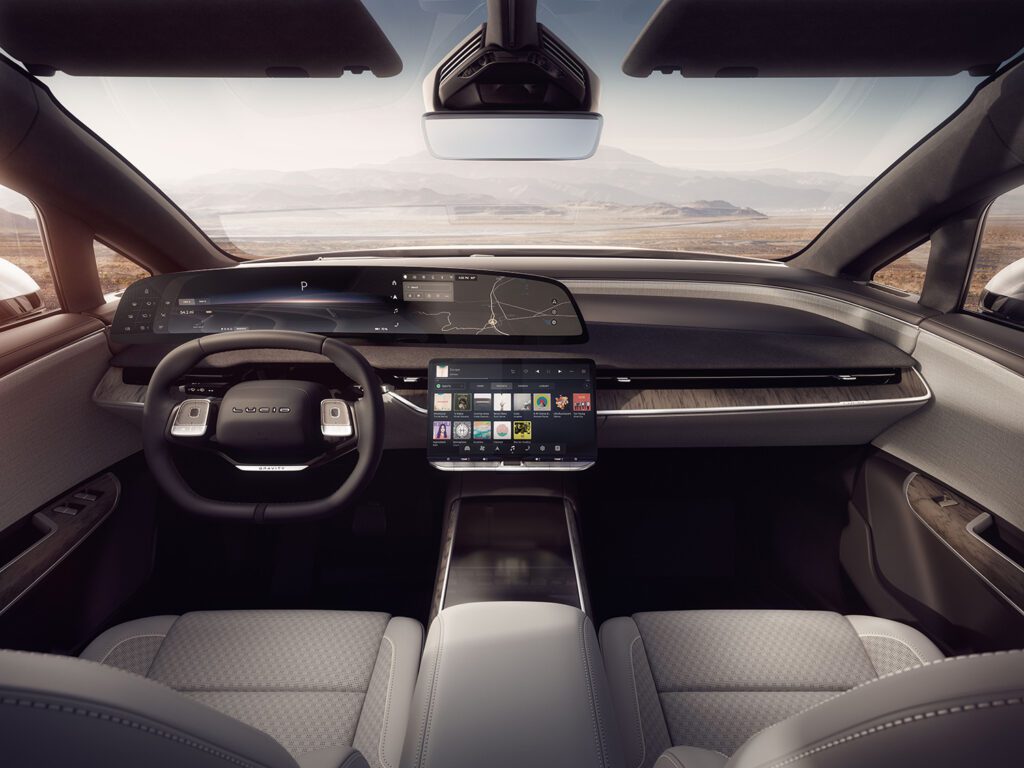
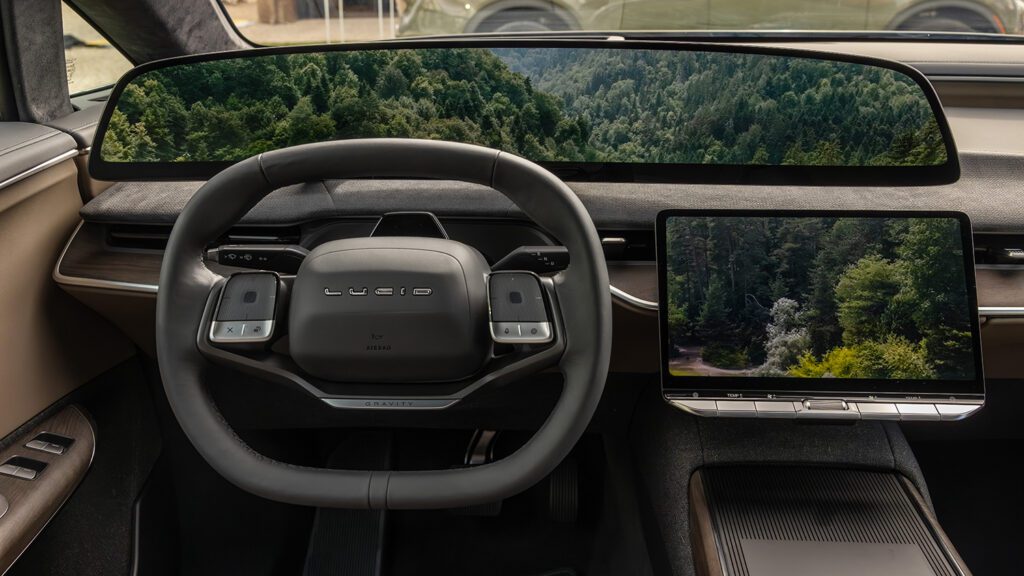
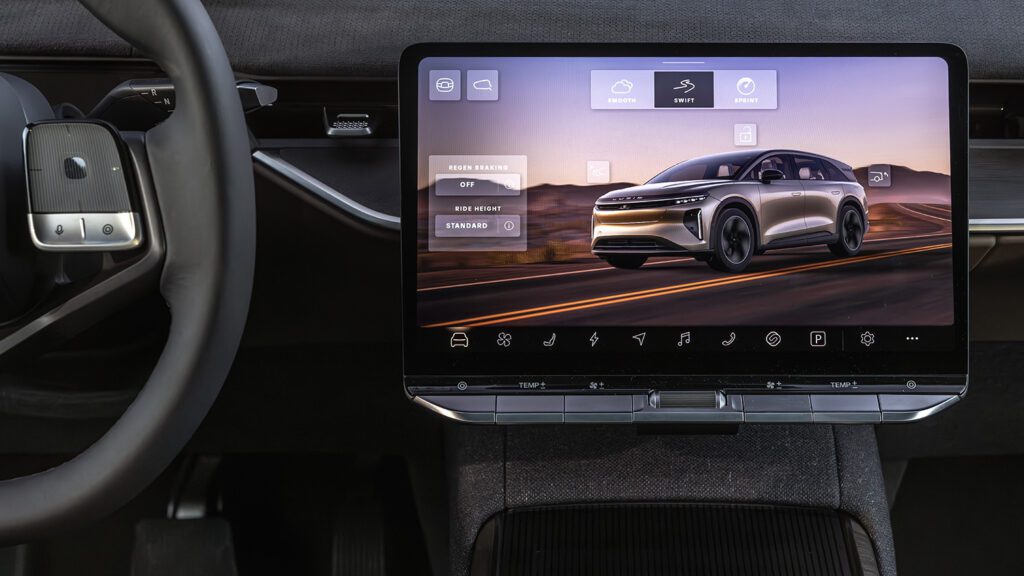
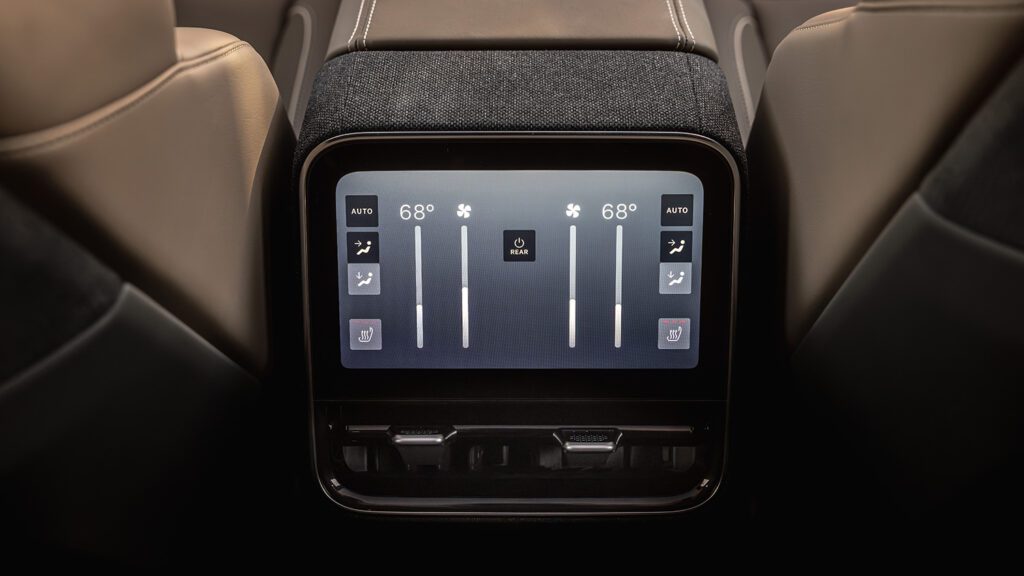
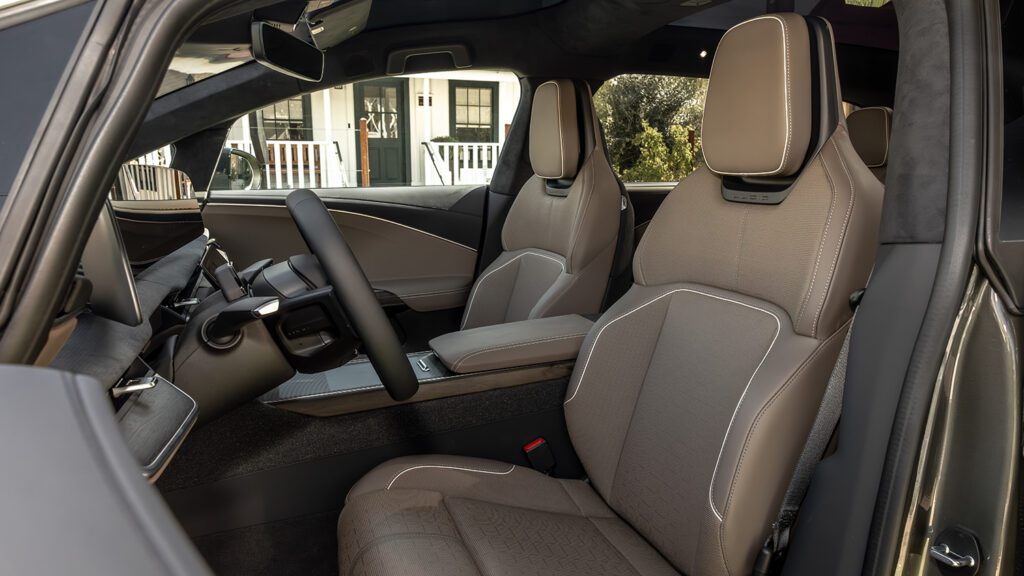
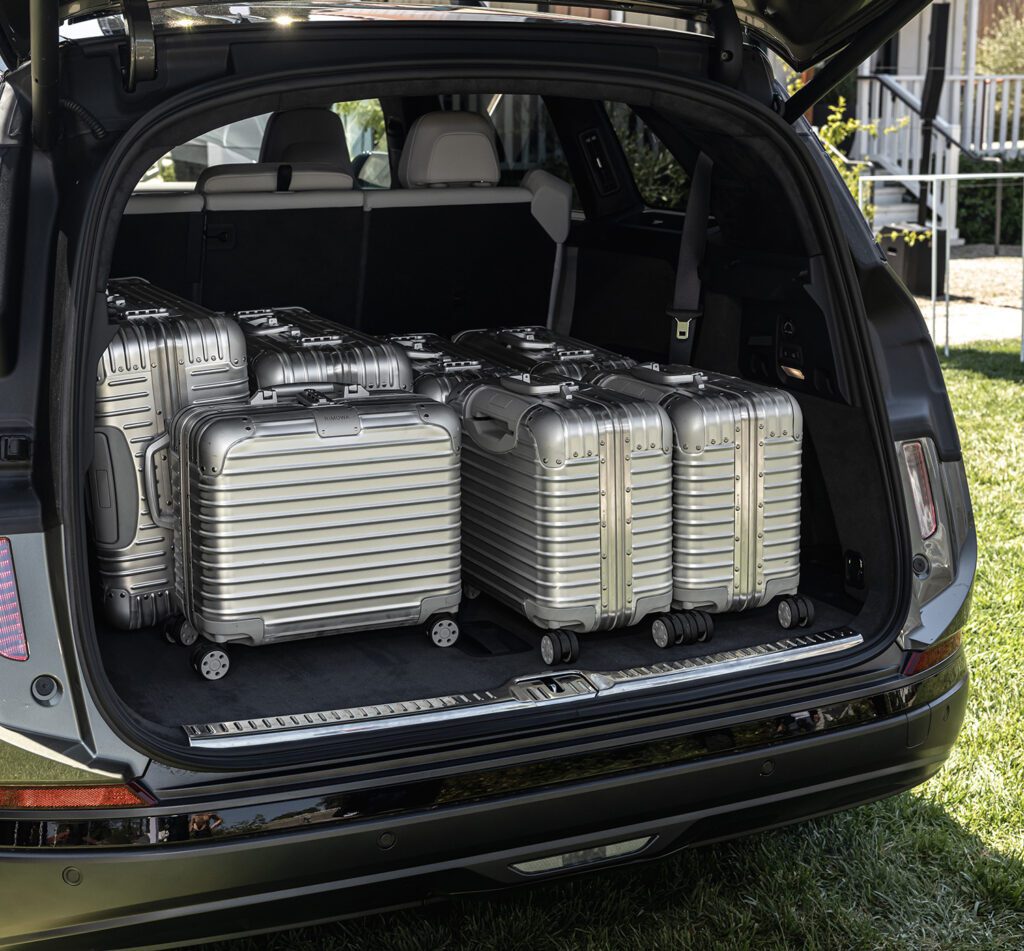
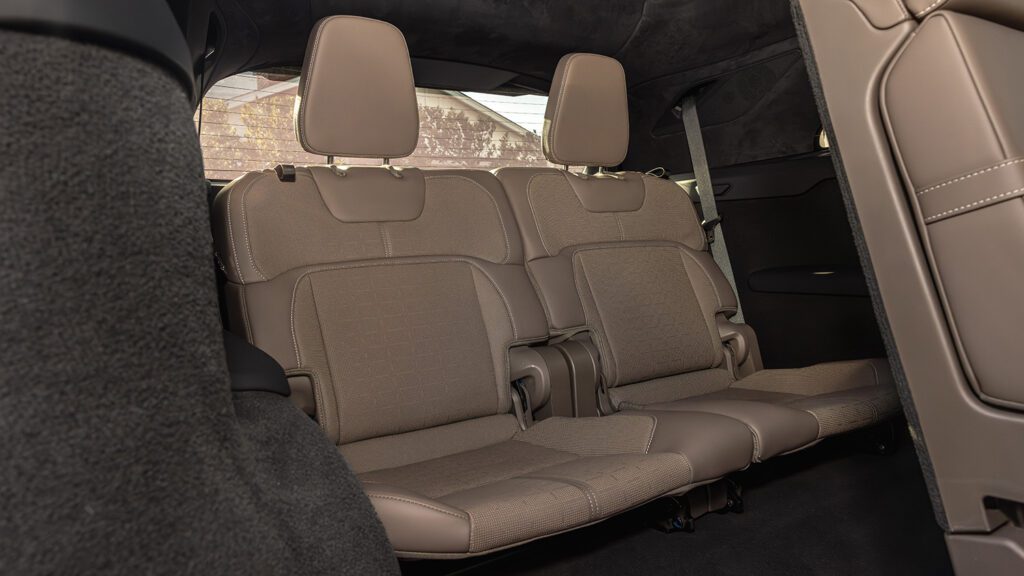
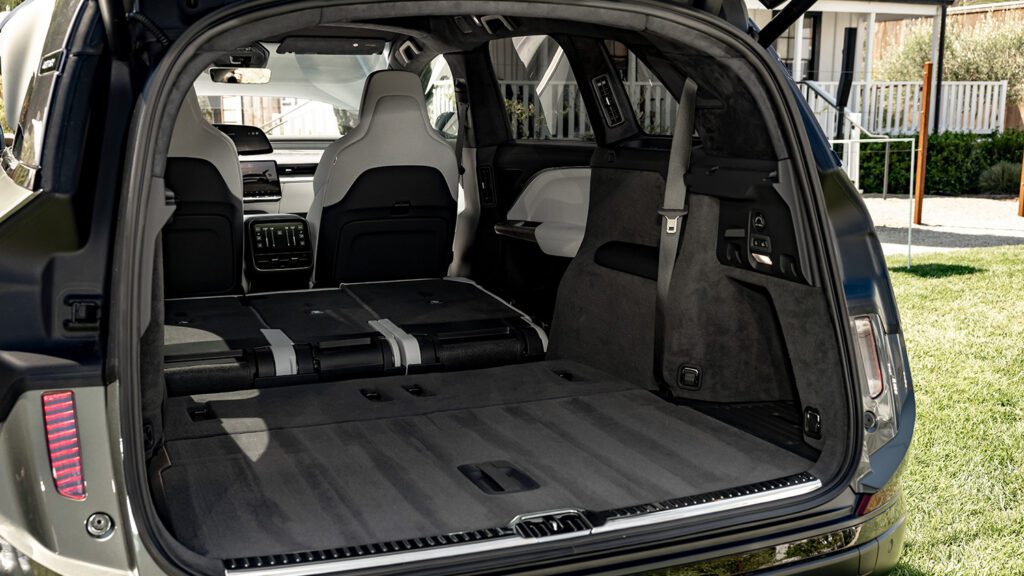
Its other drawback may have to do with whether it’s perceived as a minivan or not. The Gravity doesn’t have sliding side doors, though the rear doors are remarkably long, which makes third-row access a breeze. Lucid execs largely shrug when asked about the dreaded “minivan” epithet; they feel it will be an appealing family vehicle, whether shoppers see it as a lower SUV or a sleek minivan. Possibly even, heaven forbid, a wagon?
Bigger but less affordable
When the original Dodge Caravan and Plymouth Voyager minivans hit the market in 1984, a main selling point was their enormous interior volume and ease of access—far better than the wagons of the day—for not much more money than any other vehicle. Chrysler built its first-generation minivans on the ubiquitous, high-volume K-Car chassis that spawned dozens of models and saved the company from its first bankruptcy.
Like all other cars, minivans have expanded enormously over the past few decades. Today’s Chrysler Pacifica is both longer and wider than a Chevrolet Tahoe full-size SUV of 25 years ago. To compete, both the ID.Buzz and the Gravity followed suit—meaning they need very large battery capacities to move big square vehicles through the Air.
The Lucid is clearly far, far ahead of the Volkswagen in efficiency; the company quotes a drag coefficient for the Gravity of 0.24, which is remarkable for a vehicle that large—though drag figures from different makers can’t be compared due to varying methods of measurement. Lucid says it gets a range of up to 450 miles from its 123 kWh battery.
The Gravity is anchored firmly at the luxury end of the scale and the ID.Buzz is something of a retro specialty vehicle for the buyer who really, really loves the looks.
The quoted drag coefficient for the VW ID.Buzz is a respectable 0.29, but its ranges of 234 (RWD) or 231 miles (FWD) are little more than half the Gravity’s—from a battery with 75 percent the capacity, at 91 kWh. Both cars must use large batteries, and that costs money.
A smaller and smaller proportion of US households able to afford a new vehicle at all—the sales-weighted average transaction price remains at its post-pandemic high around $48,800—and neither of these vehicles is going to address the need for affordable, compelling smaller EVs that compete with to their gasoline counterparts.
On the other hand, minivans themselves aren’t a particularly large segment, and they’re expensive too. When this article was written, the lowest list price for any gasoline minivan was just under $40,000, for the base Kia Carnival and Chrysler Voyager models. Volume was nothing to write home about either—the entire category of four models sold just over 300,000 units in 2024. (Sales blipped up in the first quarter of 2025; we’ll see if that lasts.)
EV minivans won’t be a huge category any time soon. The Gravity is anchored firmly at the luxury end of the scale and the ID.Buzz is something of a retro specialty vehicle for the buyer who really, really loves the looks. Still, the Volkswagen ID.Buzz and Lucid Gravity should expand the market for EVs at least incrementally. They’re another proof point showing that electric powertrains are suited not just to smaller vehicles but to other segments, including the larger ones.
Lucid and Volkswagen provided airfare, lodging and meals to enable Charged to bring you this first-person drive report on their vehicles.
This article first appeared in Issue 72: April-June 2025 – Subscribe now.



